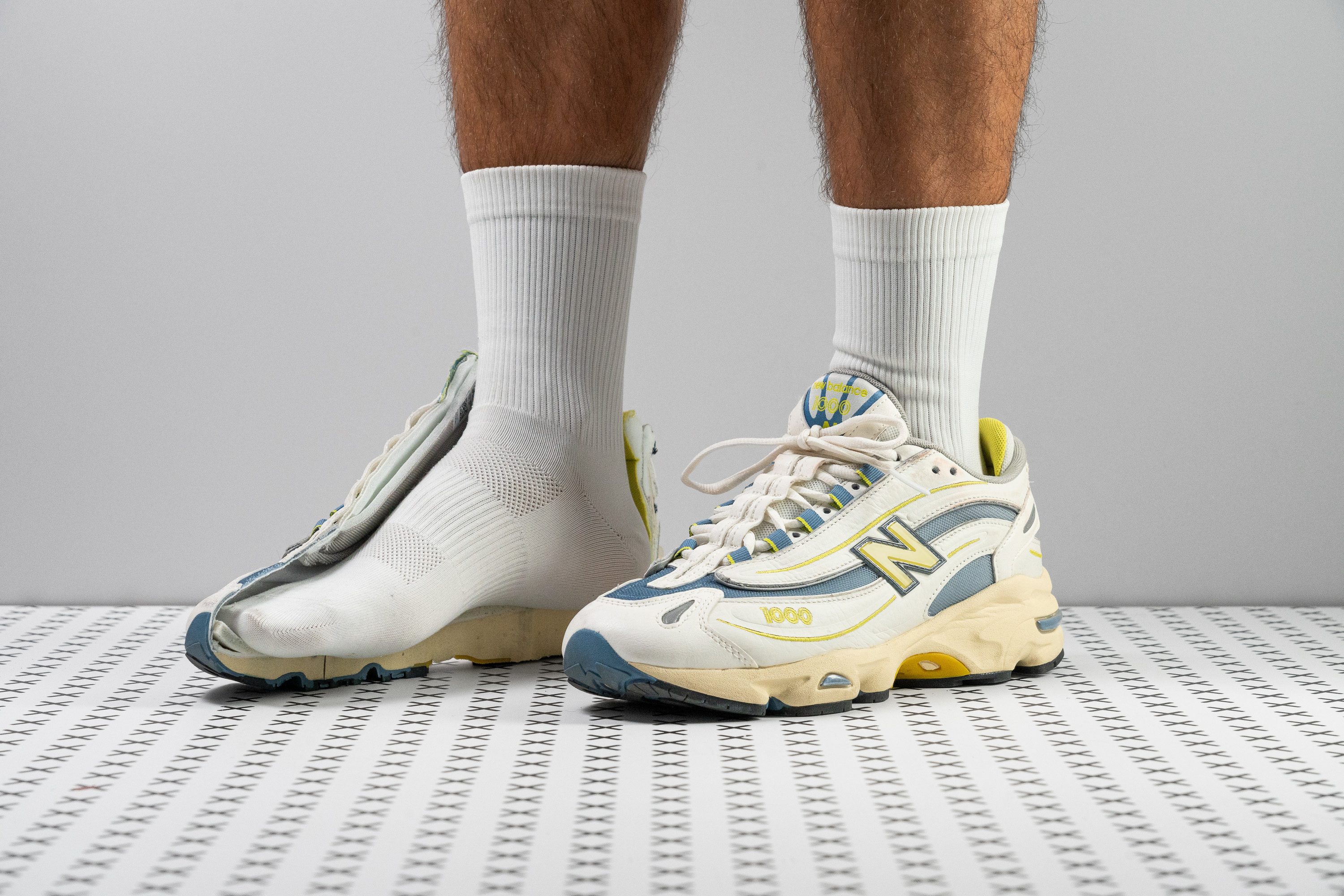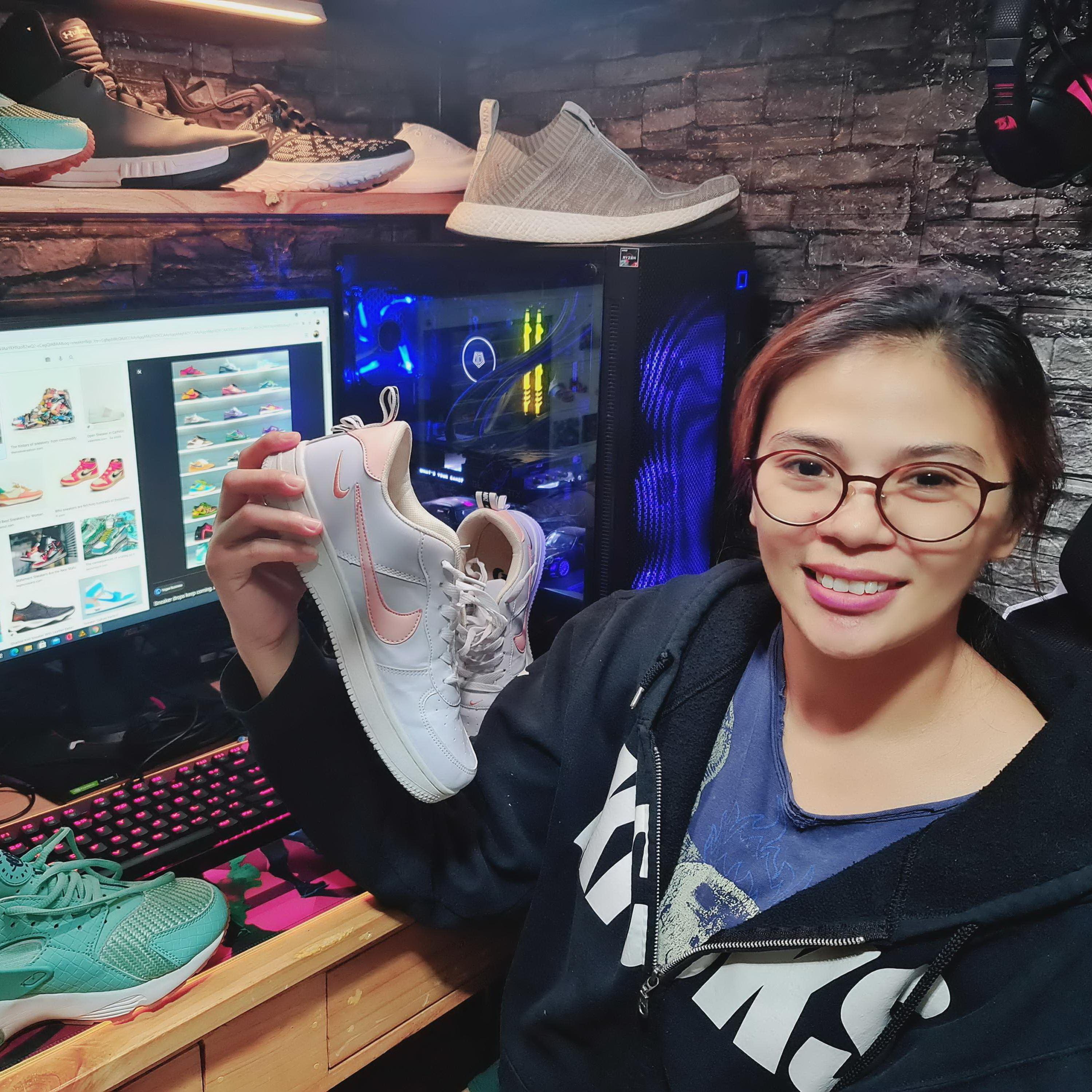Our verdict
- Top pick in best New Balance trainers
- Top pick in best chunky trainers
Pros
- Really comfortable for all-day wear
- Soft and protective cushioning
- Great lockdown and surefootness
- Nice stability (wide platform)
- Lightweight on foot but with padded interiors
- Incredibly breathable
- Real suede
- Super stylish
- Trendy retro vibe
- Great traction for city streets
Cons
- Frail mesh components
- Tongue might be too long for some
Audience verdict
- Top 19% most popular trainers
Comparison
The most similar trainers compared
+ + Add a shoe | |||||
|---|---|---|---|---|---|
| Audience score | 91 Great! | 87 Good! | 87 Good! | 93 Great! | |
| Price | £150 | £170 | £210 | £160 | |
| Style | Retro | ClassicRetroSportyChunky | ClassicSporty | ClassicSportyFuturisticChunky | |
| Shock absorption | High | - | - | Moderate | |
| Energy return | Moderate | - | - | Moderate | |
| Traction | High | - | - | High | |
| Breathability | Breathable | Breathable | Breathable | Moderate | |
| Weight lab | 13.2 oz / 373g | 14 oz / 397g | 13.9 oz / 393g | 15.1 oz / 427g | |
| Size | True to size | True to size | True to size | True to size | |
| Midsole softness | Soft | Balanced | Balanced | Soft | |
| Material | MeshSuede | LeatherMeshSuede | LeatherMeshSuede | MeshSuede | |
| Season | Summer | Summer | SpringFall | SpringFall | |
| Inspired from | - | Running | Running | Running | |
| Width / fit | Medium | Medium | Medium | Medium | |
| Toebox width | Medium | Medium | Medium | Narrow | |
| Leather/suede quality | Real leather | Real leather | - | Real suede | |
| Toebox durability | Bad | Decent | Decent | Decent | |
| Heel padding durability | Bad | Decent | Bad | Decent | |
| Outsole durability | Good | Good | Good | Good | |
| Heel stack lab | 36.5 mm | 34.8 mm | 34.1 mm | 37.3 mm | |
| Stiffness | Moderate | Stiff | Moderate | Moderate | |
| Tongue padding | Average | Average | Average | Average | |
| Drop lab | 11.3 mm | 10.3 mm | 14.5 mm | 11.3 mm | |
| Forefoot | 25.2 mm | 24.5 mm | 19.6 mm | 26.0 mm | |
| Removable insole | ✓ | ✓ | ✓ | ✓ | |
| Heel tab | None | None | None | None | |
| Torsional rigidity | Moderate | Stiff | Moderate | Moderate | |
| Heel counter stiffness | Stiff | Moderate | Moderate | Moderate | |
| Reflective elements | ✓ | ✓ | ✓ | ✓ | |
| Closure | Laces | Laces | Laces | Laces | |
| Top | Low top | Low top | Low top | Low top | |
| Ranking | #60 Top 50% | #105 Bottom 13% | #106 Bottom 12% | #23 Top 20% | |
| Popularity | #22 Top 19% | #82 Bottom 32% | #67 Bottom 44% | #1 Top 1% |
Who should buy
The 1000 deserves a spot among your New Balance favourite pairs if:
- You're looking for a comfortable and trendy pair to wear all day every day!
- You're a retro lover and you want trainers with a Y2K vibe.
- You want a shoe with soft and protective cushioning because you're on your feet for hours.
- Lifestyle shoes with a lightweight and breathable structure yet padded interiors are your cup of tea.
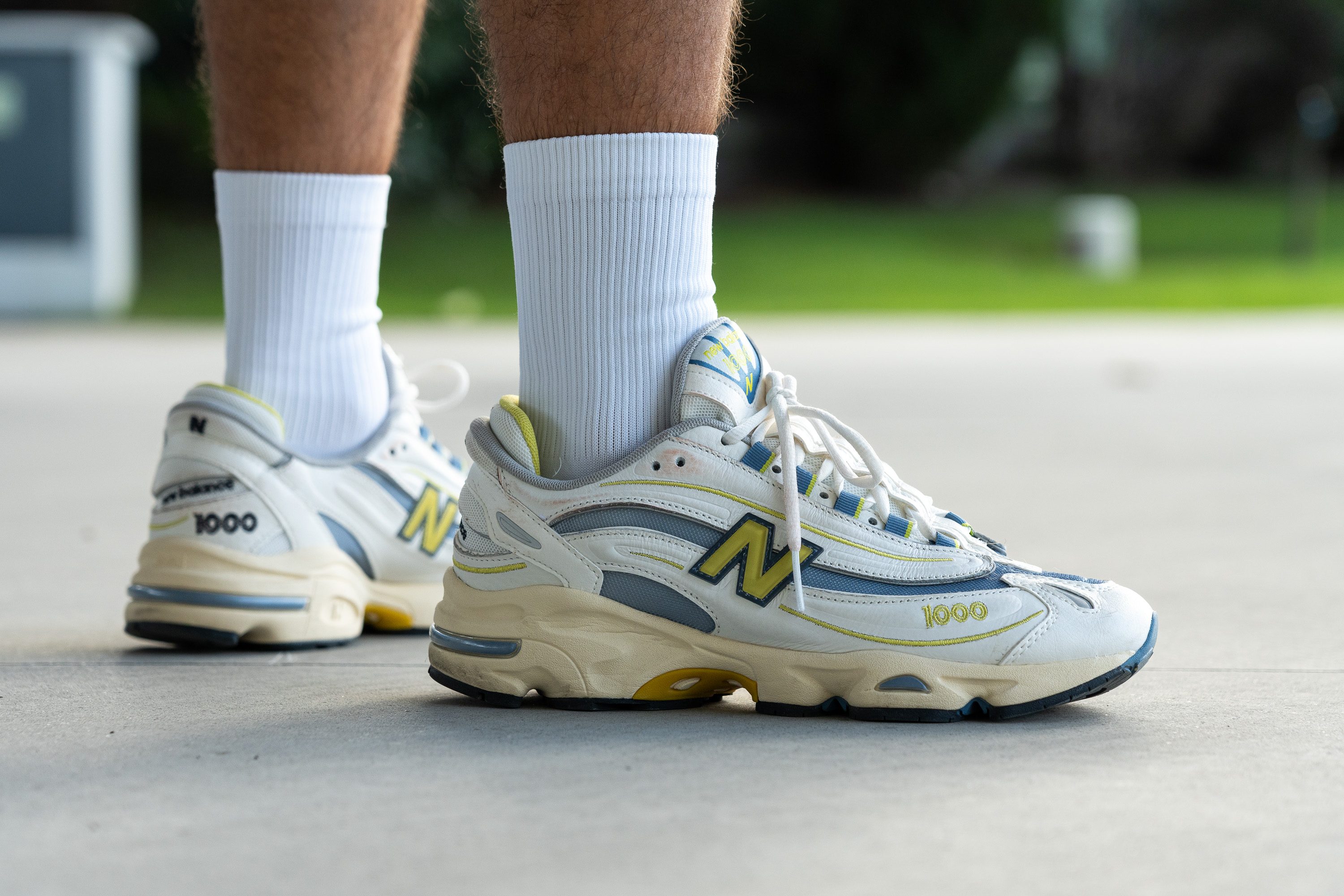
Who should NOT buy
Then, if you want a more affordable pair that has the same retro look, the New Balance 530 might be exactly what you need! It comes in a variety of colorways, so you'll definitely find one that matches your vibe.
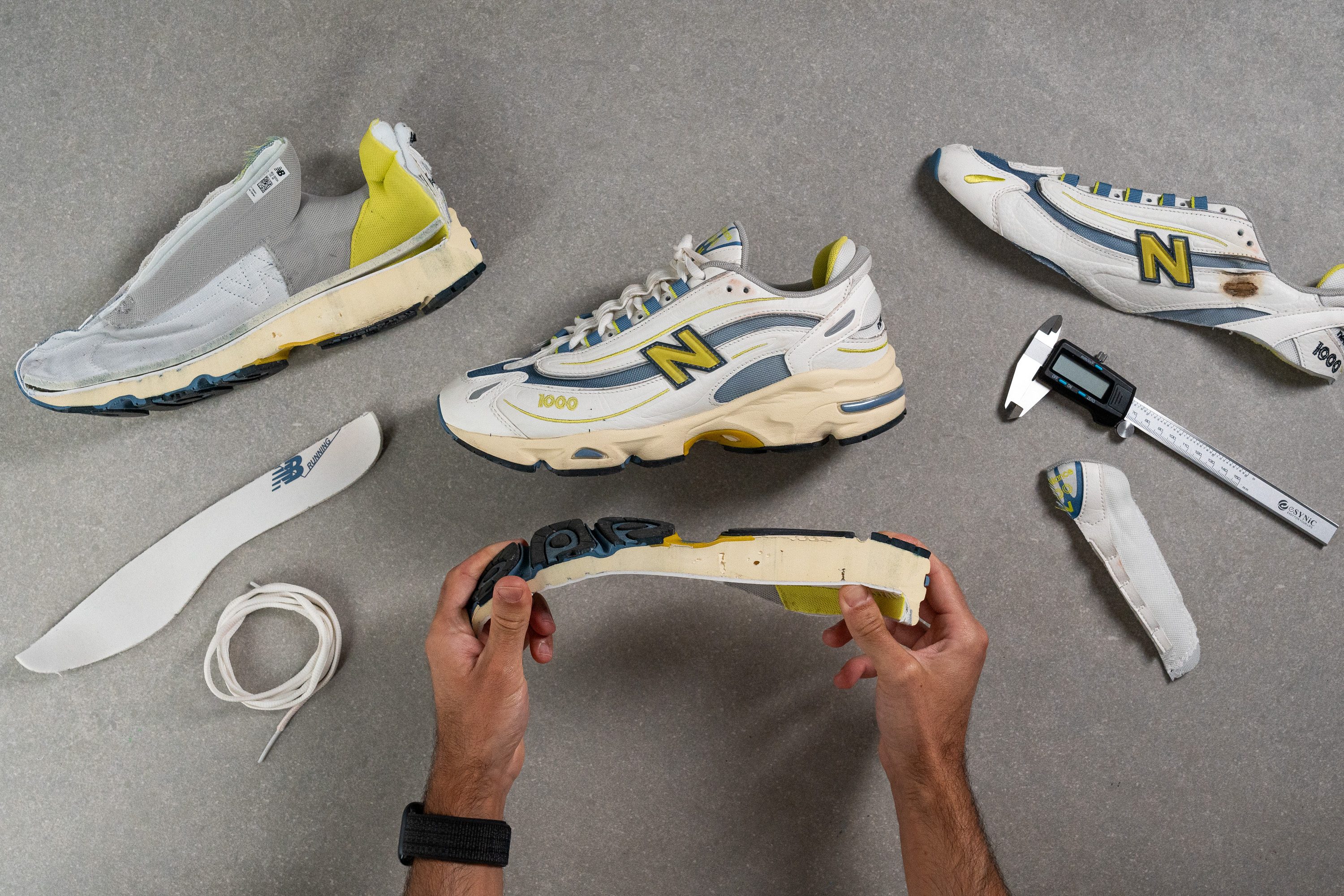
Cushioning
Shock absorption
Get ready to experience bottomless cushioning with this thick-foamed New Balance sneaker!
With an impressively high shock absorption reading of 122 SA, we found that this kick attenuates more impact than many other lifestyle trainers on the market. Instead of going straight to our feet and joints, most of that ground force gets absorbed by the shoe's chunky and protective midsole making it easier for us to stay on our feet for longer.
Thus, we can wholeheartedly recommend the NB 1000 for long hours of walking and standing as well as for all-day wear.
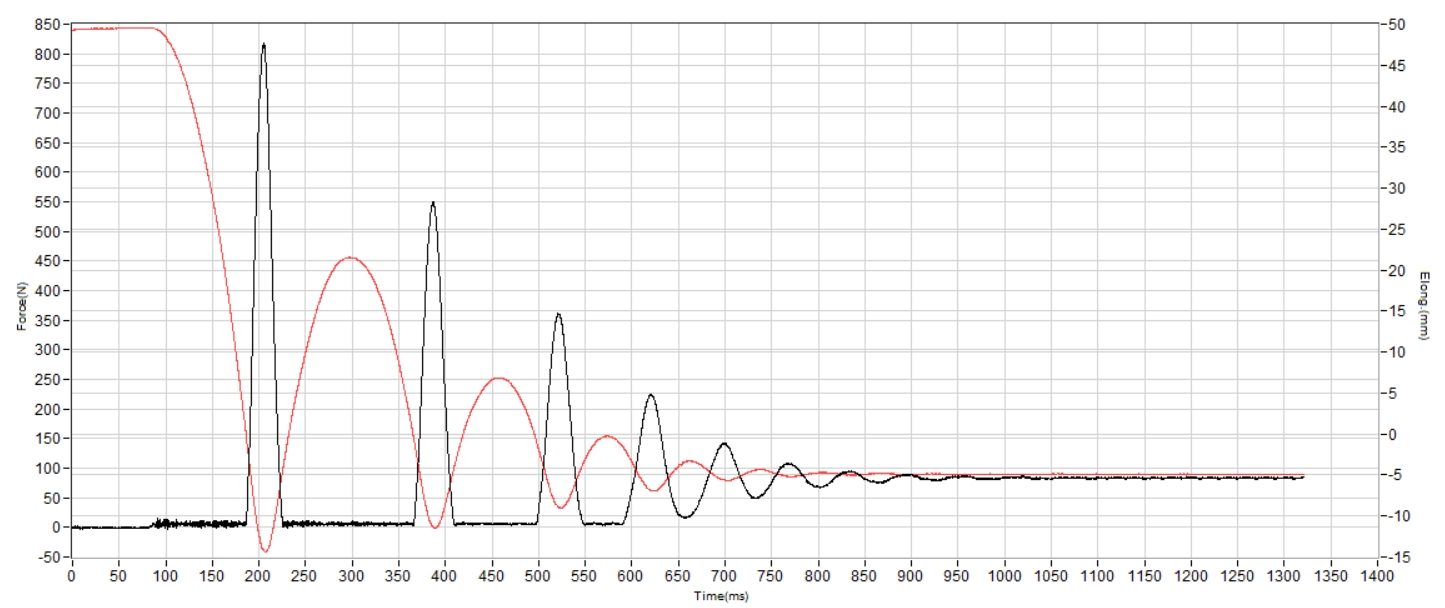
| 1000 | 122 SA |
| Average | 89 SA |
Energy return
Following the globally recognised ASTM F1976 standard for testing cushioning properties, we also measured the amount of energy that this shoe's midsole gives back to the wearer.
At 52%, we found that the New Balance 1000 is only moderately responsive. However, it is a perfectly normal score for a casual sneaker with no advanced cushioning technologies. It offers a pretty stable platform without feeling completely dead underfoot.
| 1000 | 51.5% |
| Average | 50.2% |
Heel stack
The incredible comfort we got from this New Balance pair comes, partly, from its thick and soft midsole.

Our calliper had to open up quite a lot to tell us this shoe's heel stack goes all the way up to 36.5 mm, which is a solid 18% higher than average!
During our wear tests, we were shielded from the harsh urban surfaces, any pebbles, and other minor obstacles we ran into.
| 1000 | 36.5 mm |
| Average | 30.7 mm |
Forefoot stack
When we say we were shielded from the ground, we don't mean exclusively on the heel! Our forefoot also felt protected by a 25.2 mm thick midsole, which is 25% taller than average.
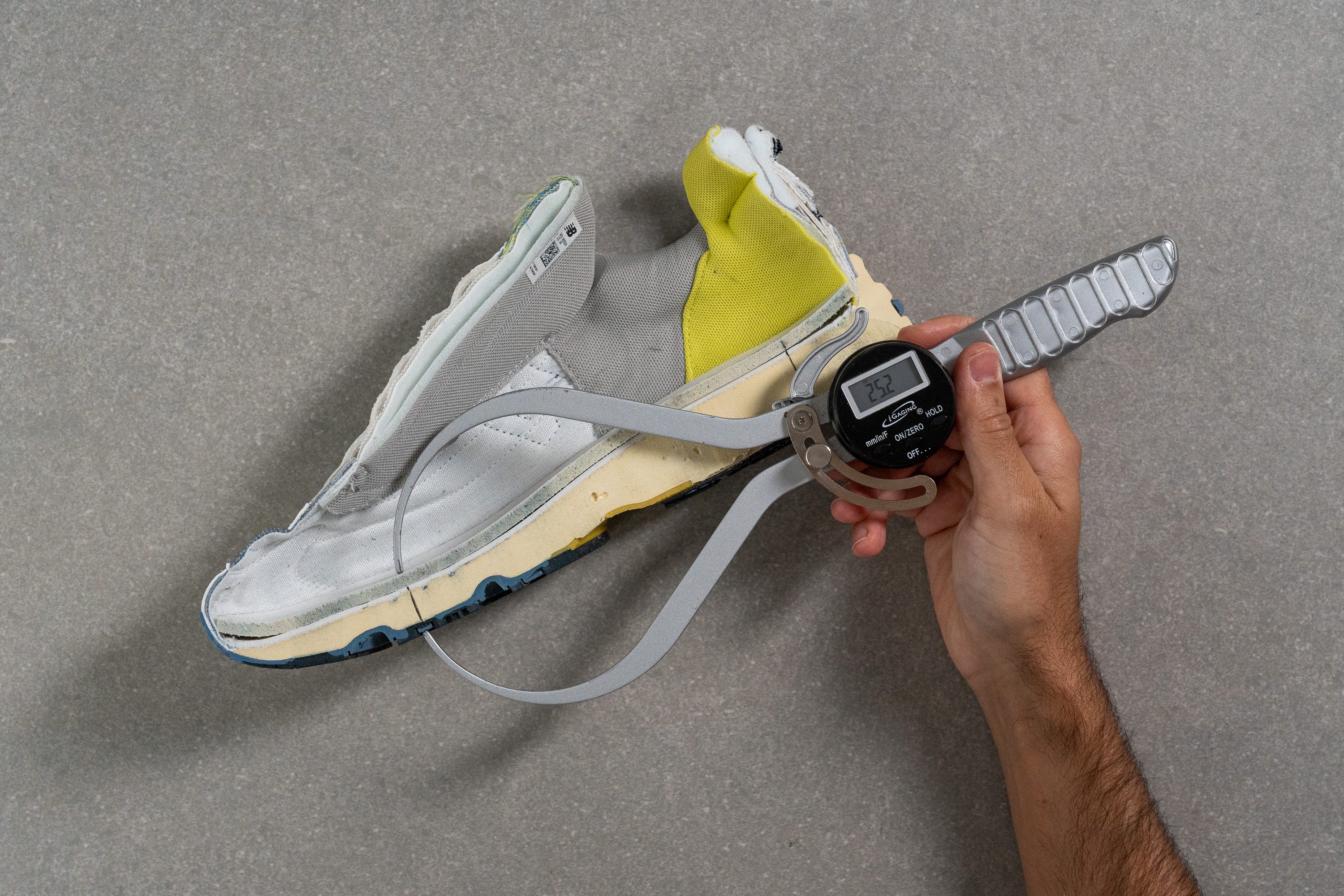
This felt wonderful, as the comfort we enjoyed underfoot went from the heel to the toes; and it lasted all day!
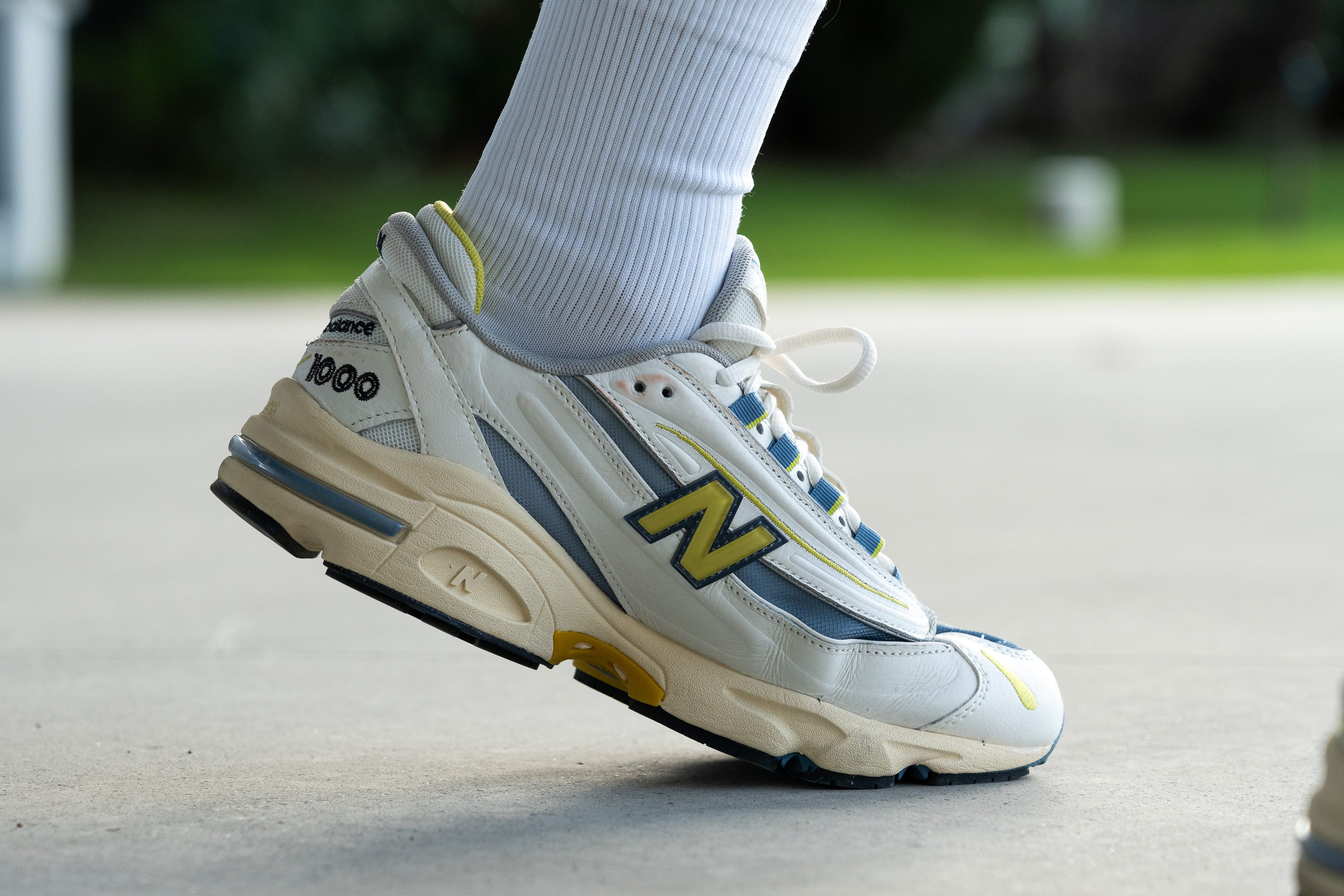
| 1000 | 25.2 mm |
| Average | 19.5 mm |
Drop
As you can see in the picture below, there's a big difference in height between the ball of the foot and the heel.
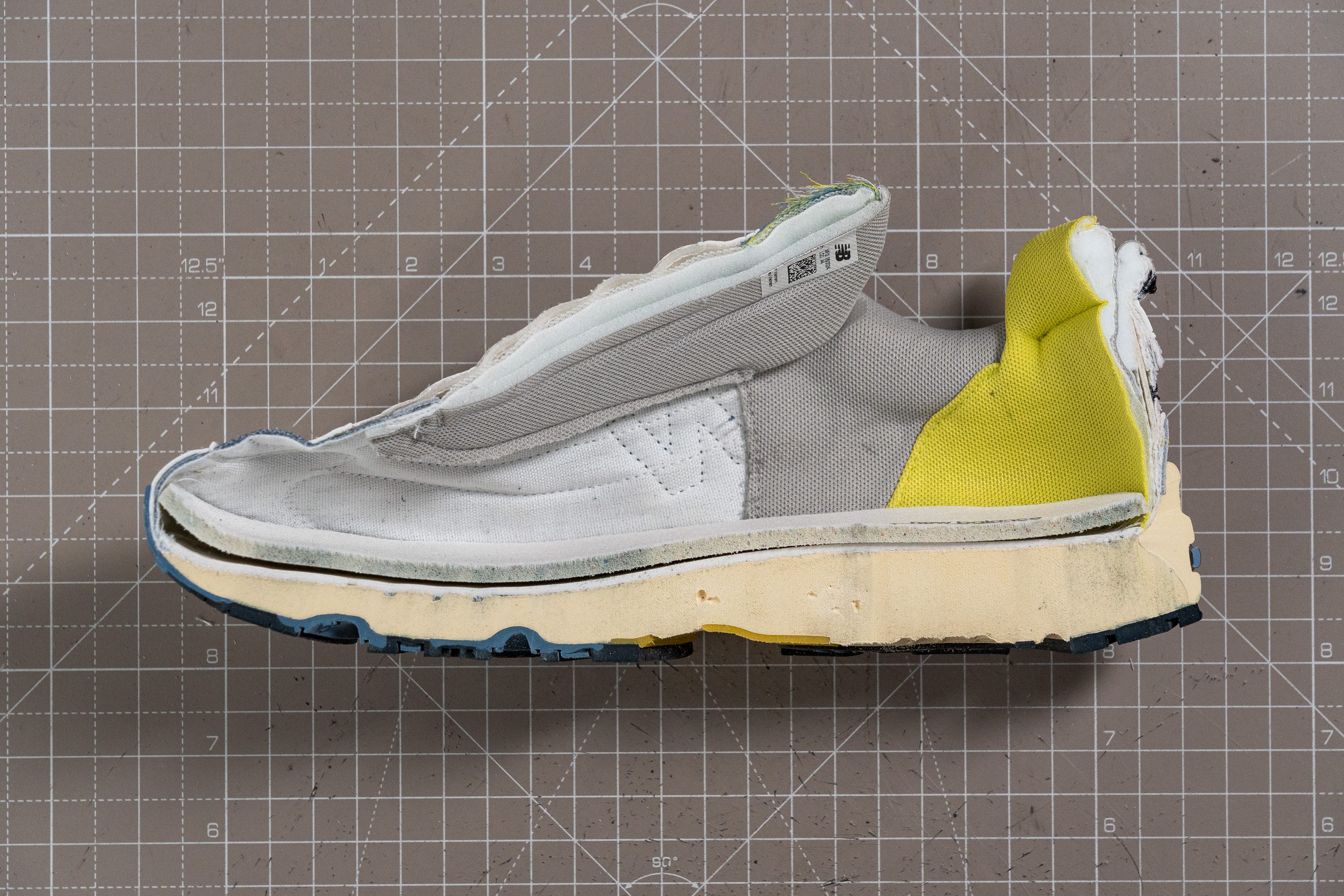
After measuring both, we ended up with a drop of 11.0 mm, which is pretty much average. This just means your heel will be slightly higher than your toes, but nothing that will make your feet feel weird!
| 1000 | 11.3 mm |
| Average | 11.2 mm |
Midsole softness
As the brand says, the combination of polyurethane and ABZORB midsole, with ABZORB cushioning at the heel, translates into a really comfortable and soft underfoot structure that our feet enjoyed for hours!
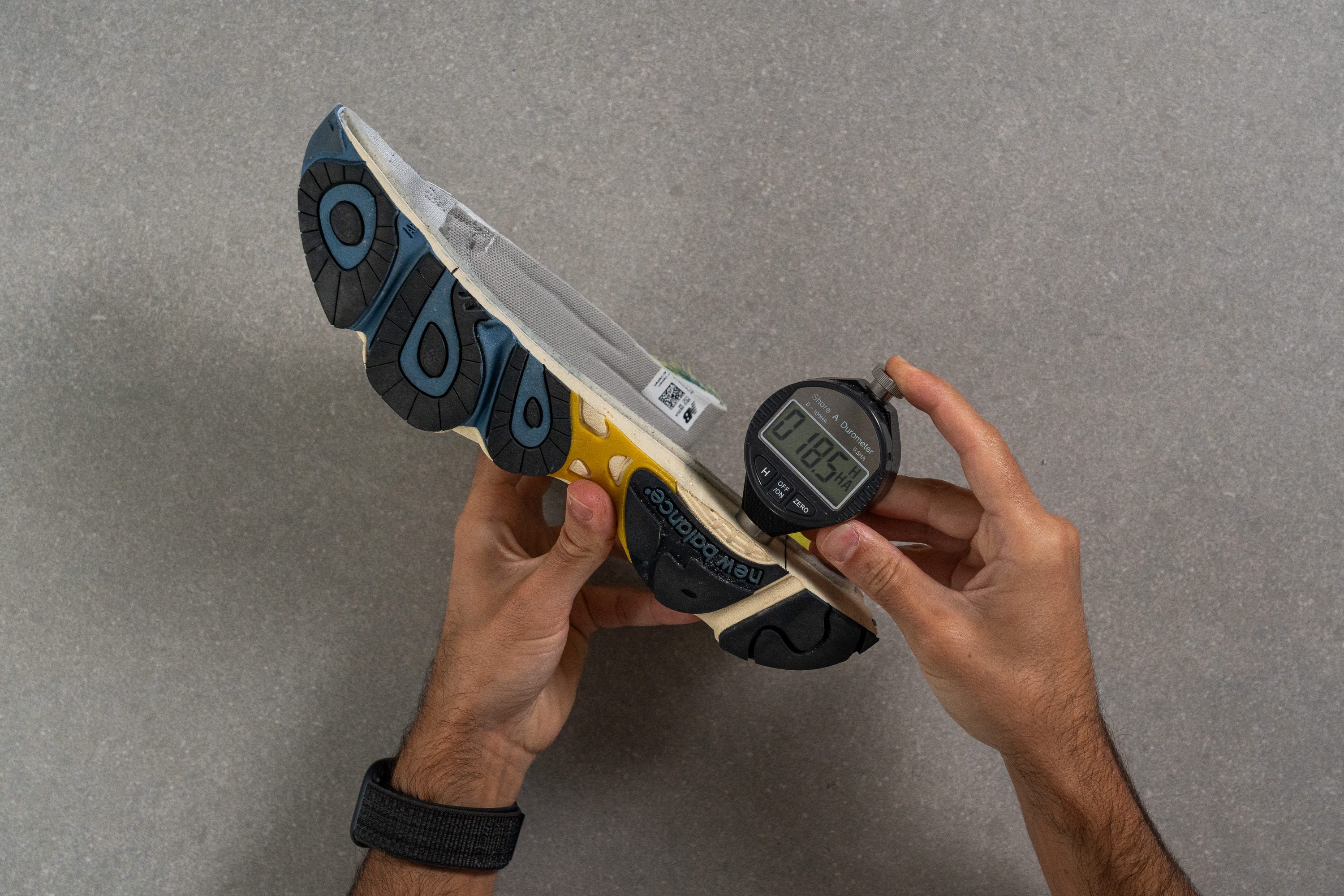
When we measured the 1000's midsole softness, our calliper returned 18.5 HA. And that's exactly how it felt: softer than average!
The best part is that, thanks to the Stability Web, we never felt our feet were sinking way too much into the shoe. This also helped us a lot when we had to spend all day walking, as our feet didn't need to make that extra effort to go back up (which is something that can happen with overly soft foams without a supportive structure).
| 1000 | 18.5 HA |
| Average | 28.6 HA |
Size and fit
Size
New Balance 1000 fits true to size (51 votes).
Width / Fit
Despite its chunky exterior, the NB 1000 actually feels like a regular D medium width sneaker on foot. Let's see if the gel mould of its interior gives the same results.
As soon as the mould solidified, we measured its widest part (between the pinkie and the big toe) with a digital calliper. The latter recorded a standard width of 92.5 mm, which is on par with the average.
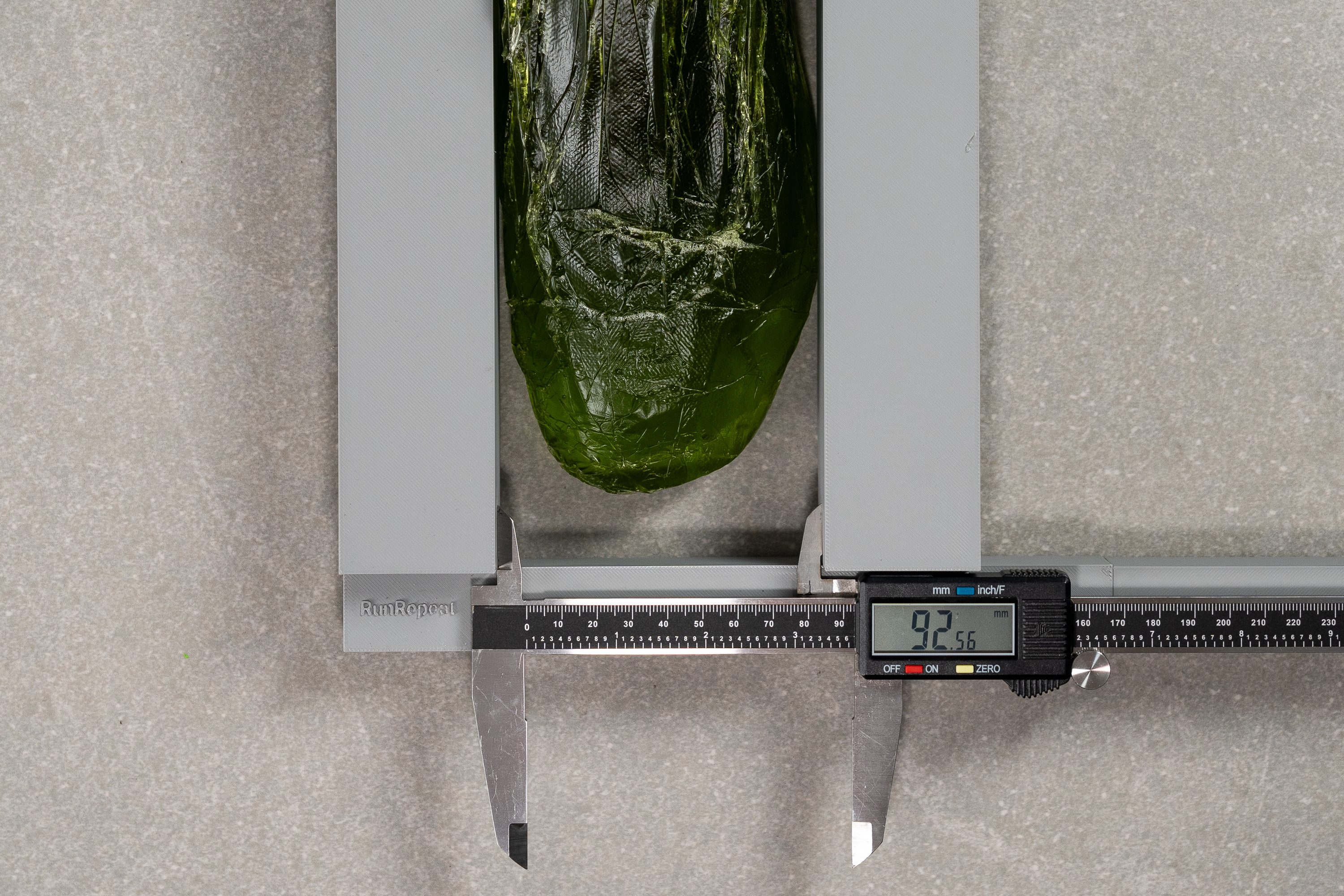
| 1000 | 92.5 mm |
| Average | 92.5 mm |
Toebox width
New Balance shoes are hardly ever tapered and the 1000 is no exception. Its rounded (even somewhat squared) toebox shape is reflected in the above-average width of 71.7 mm near the big toe.
It doesn't make the shoe's toebox wide but adds some welcome wiggle room for all-day wear.
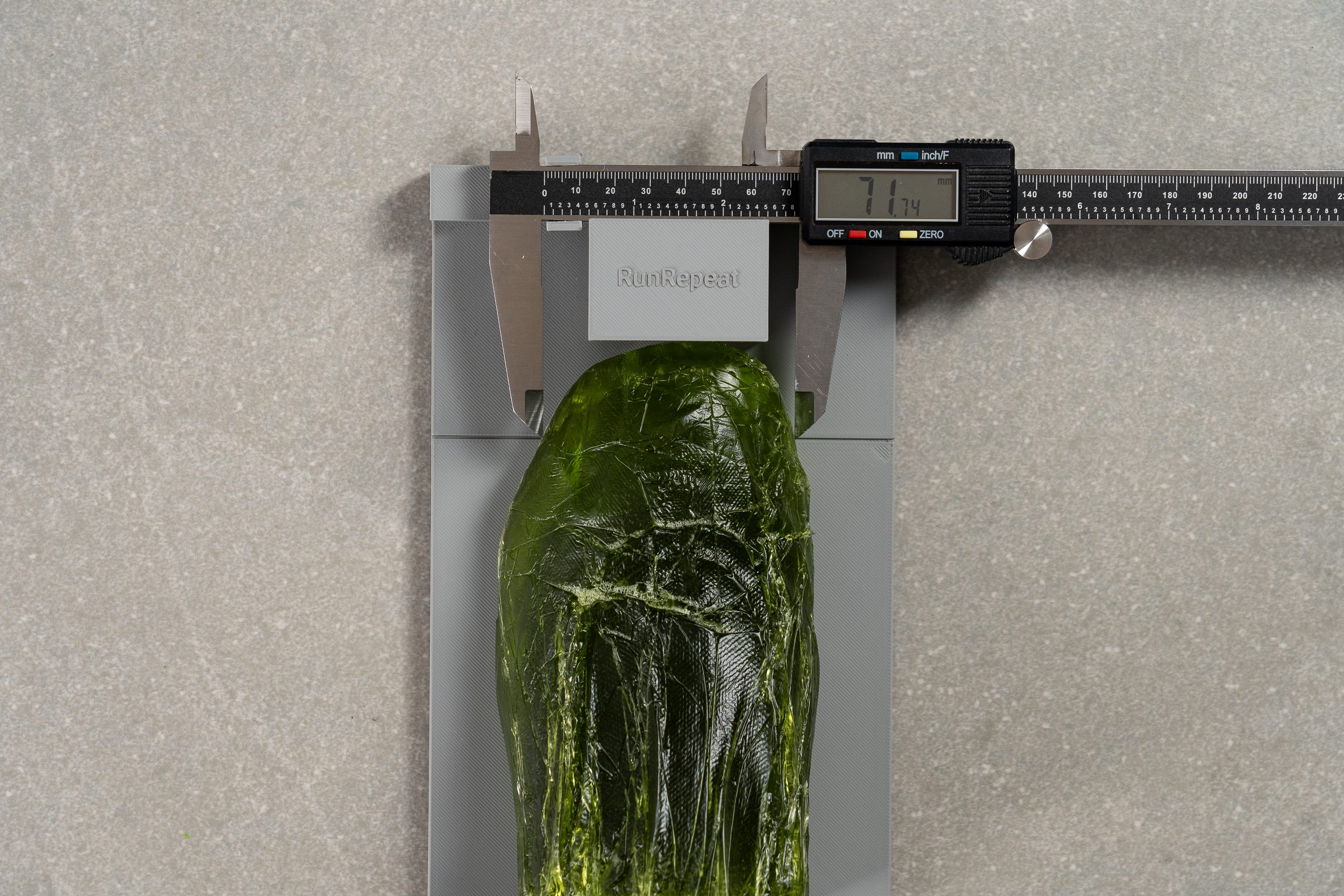
| 1000 | 71.7 mm |
| Average | 68.9 mm |
Toebox height
Another great surprise was finding out that our toes also had plenty of vertical space too! According to the calliper, the toebox height of this New Balance sneaker is above-average at 30.8 mm.
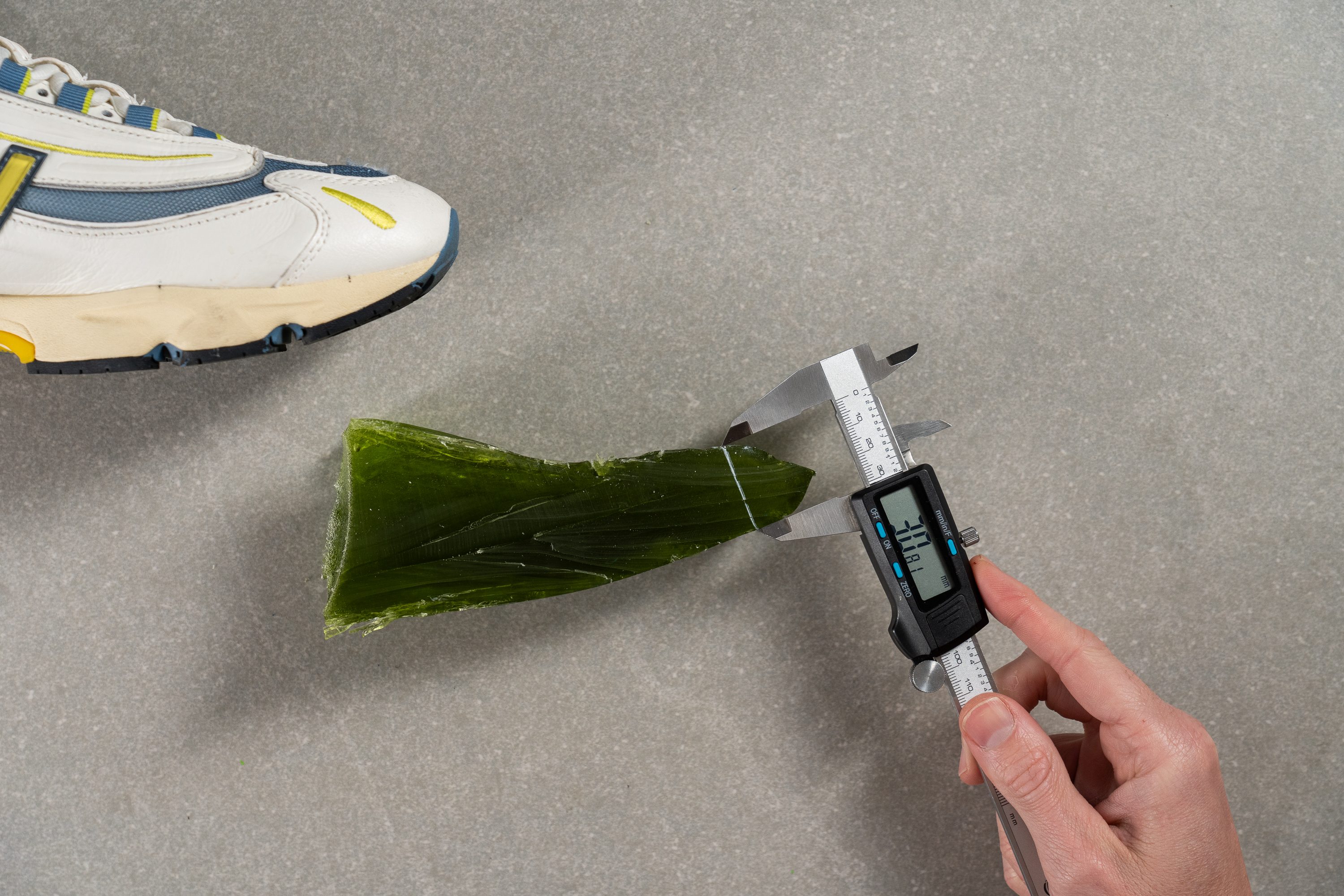
In other words, our toes were free to move freely in any direction.
| 1000 | 30.8 mm |
| Average | 27.8 mm |
Traction / Grip
The 1000 provided us with a solid ride regarding stability and grip.
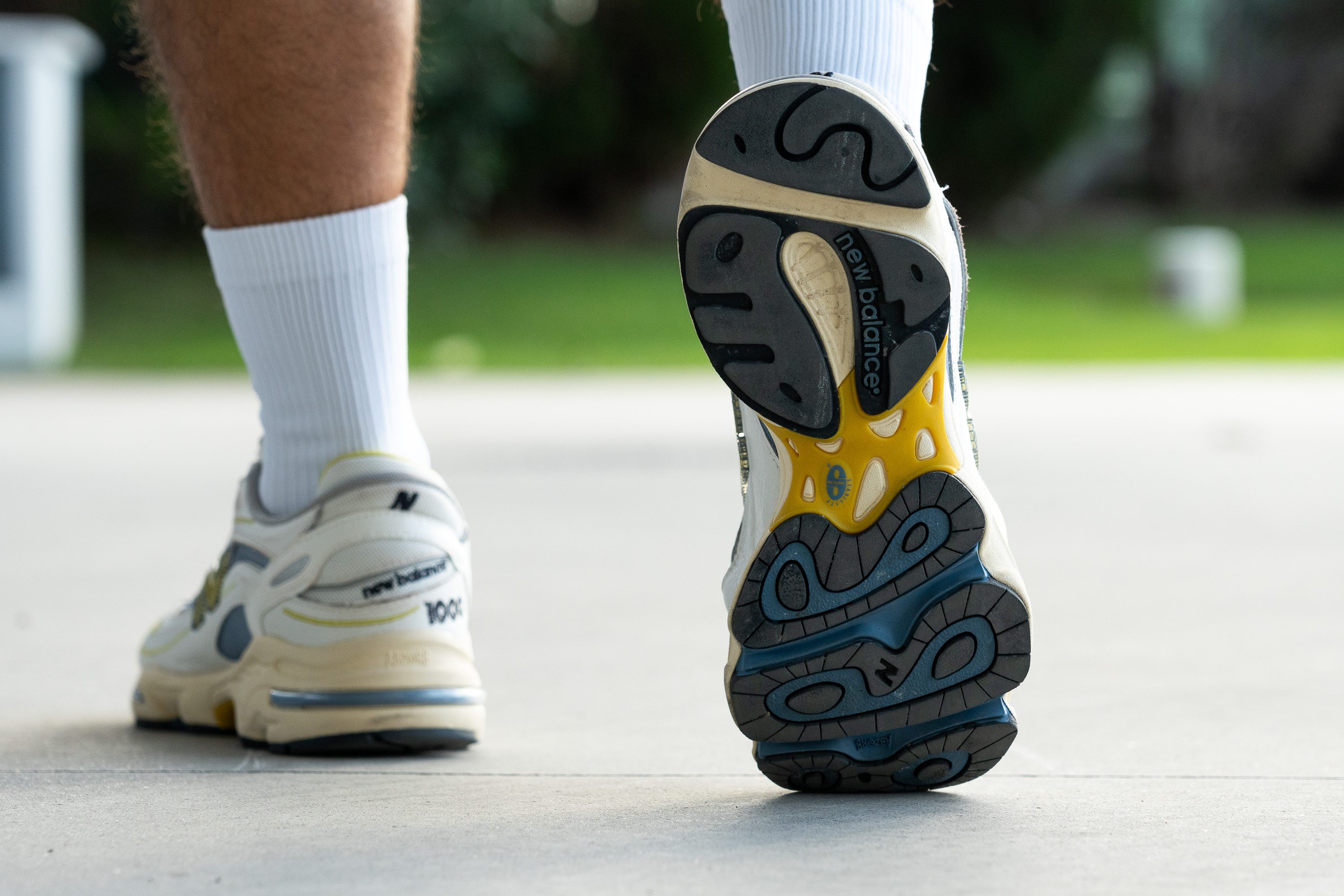
First things first, this shoe has an outsole design that we really, really liked. Not only because of its fair rubber coverage (which also didn't make this pair heavy on foot), but also because of the multiple strategic flex grooves it features.
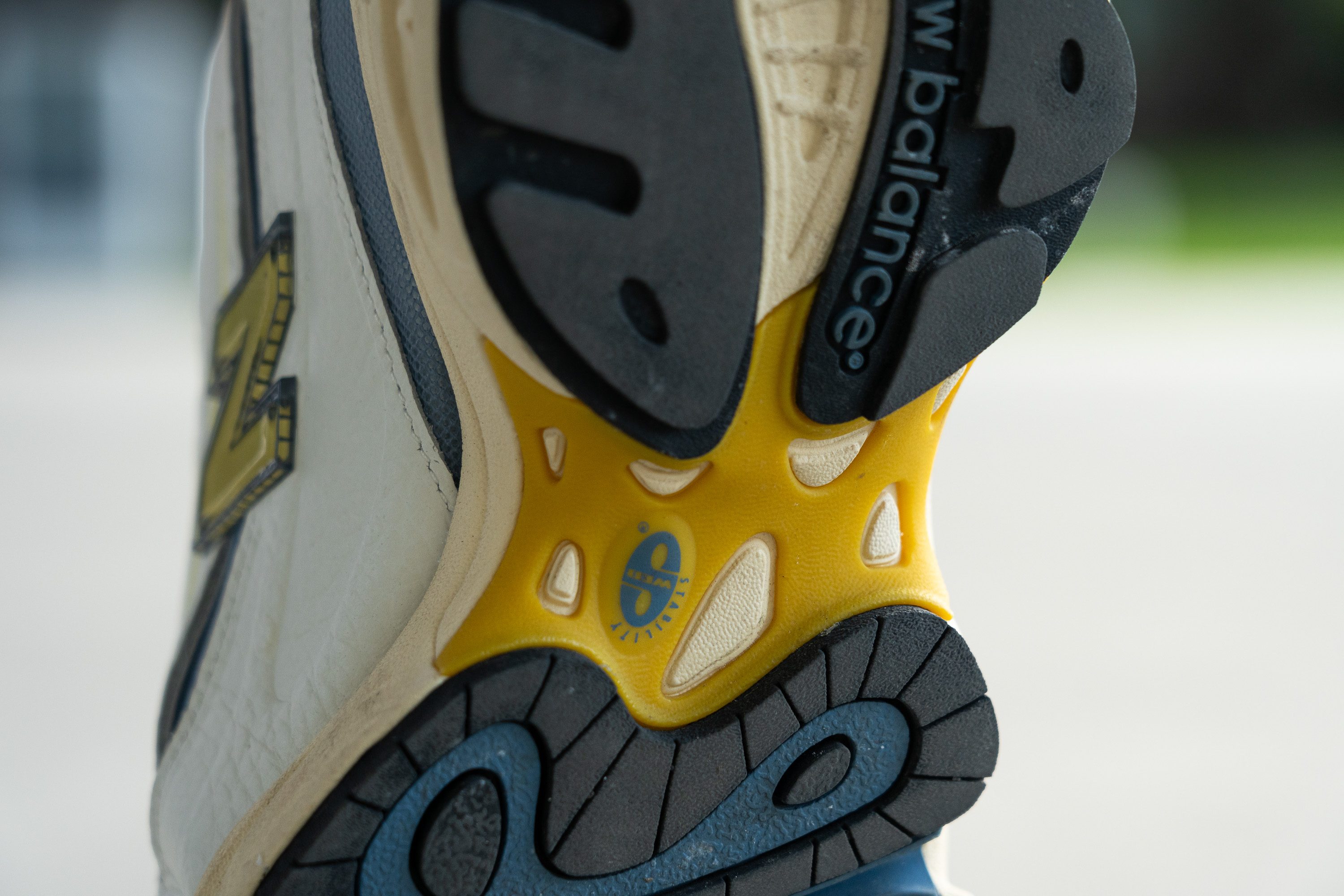
We have mentioned it before, but the NB 1000 includes a plastic piece in the midfoot, right between the forefoot and the heel outsole, which is called Stability Web. As its own name indicates, this detail adds non-intrusive stability to the ride, which is something we always appreciate!
Now, going back to the traction! To sum it up: we found it great. This shoe bit the floor consistently and effortlessly.
Traction test
We are happy to report that the horseshoe-like design of the NB 1000's heel showed a great friction score of 0.45.
Our grip test machine mimicked a walking person's heel strike on wet concrete by stomping the shoe's heel at a 7-degree angle and a 500N force. Satisfied with the result, we can confirm that the 1000 is ready to tackle most urban surfaces with confidence. But please keep in mind that the shoe's rubber is not super tacky either so you want to tread slippery areas lightly.
| 1000 | 0.45 |
| Average | 0.43 |
Outsole design
We loved the shoe's whimsical outsole design with its extra deep and curvy flex grooves.
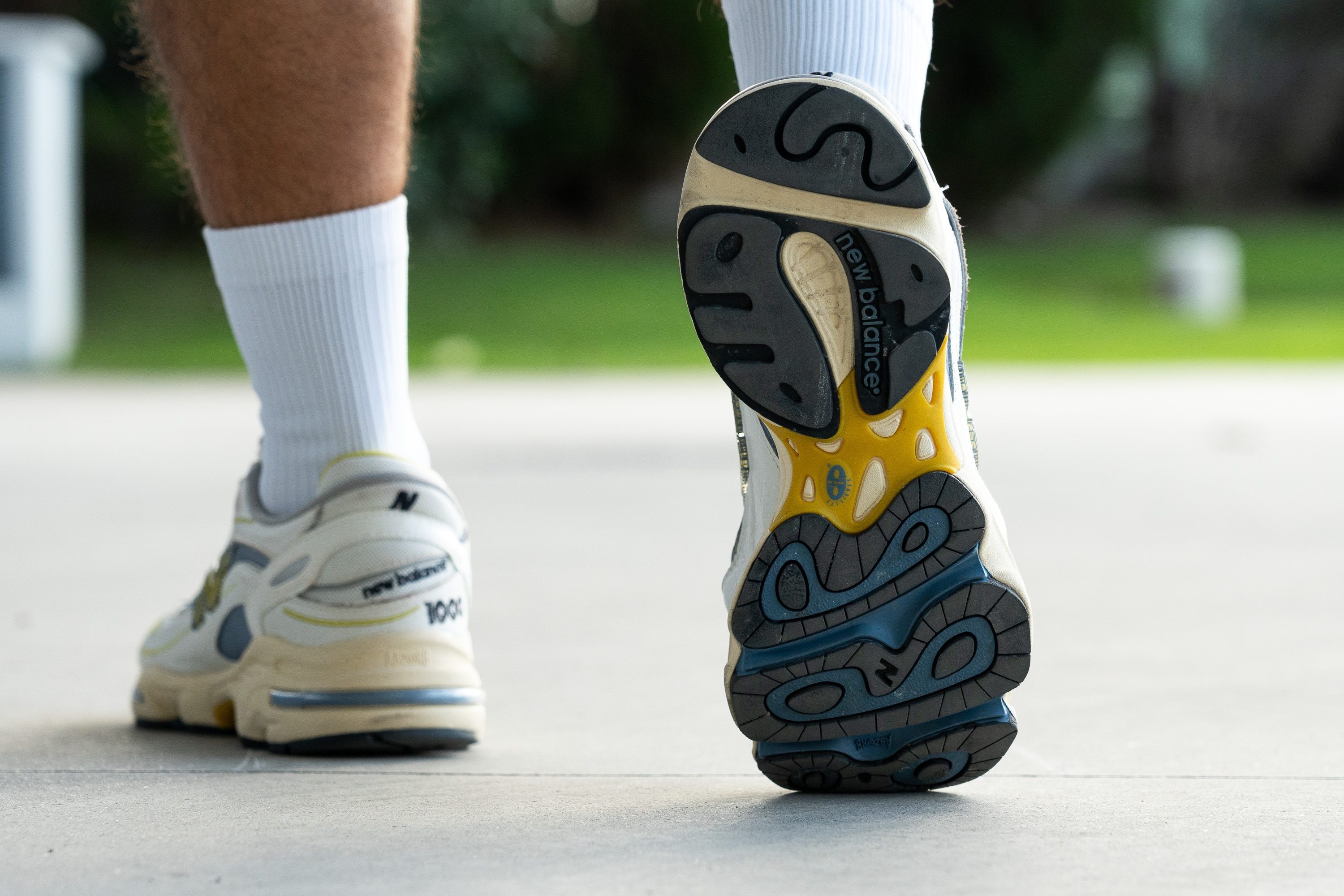
Flexibility / Stiffness
Despite its high torsional rigidity, this shoe bent pretty easily in the forefoot during our wear tests. This is because torsional and longitudinal flexibility are two different concepts!
Our shoe flexing tester showed that this NB kick needed only 11.7N of force to bend by 30 degrees, which is notably less than it takes on average! This translated into an easy and natural ride, as the 1000 bent pretty comfortably.
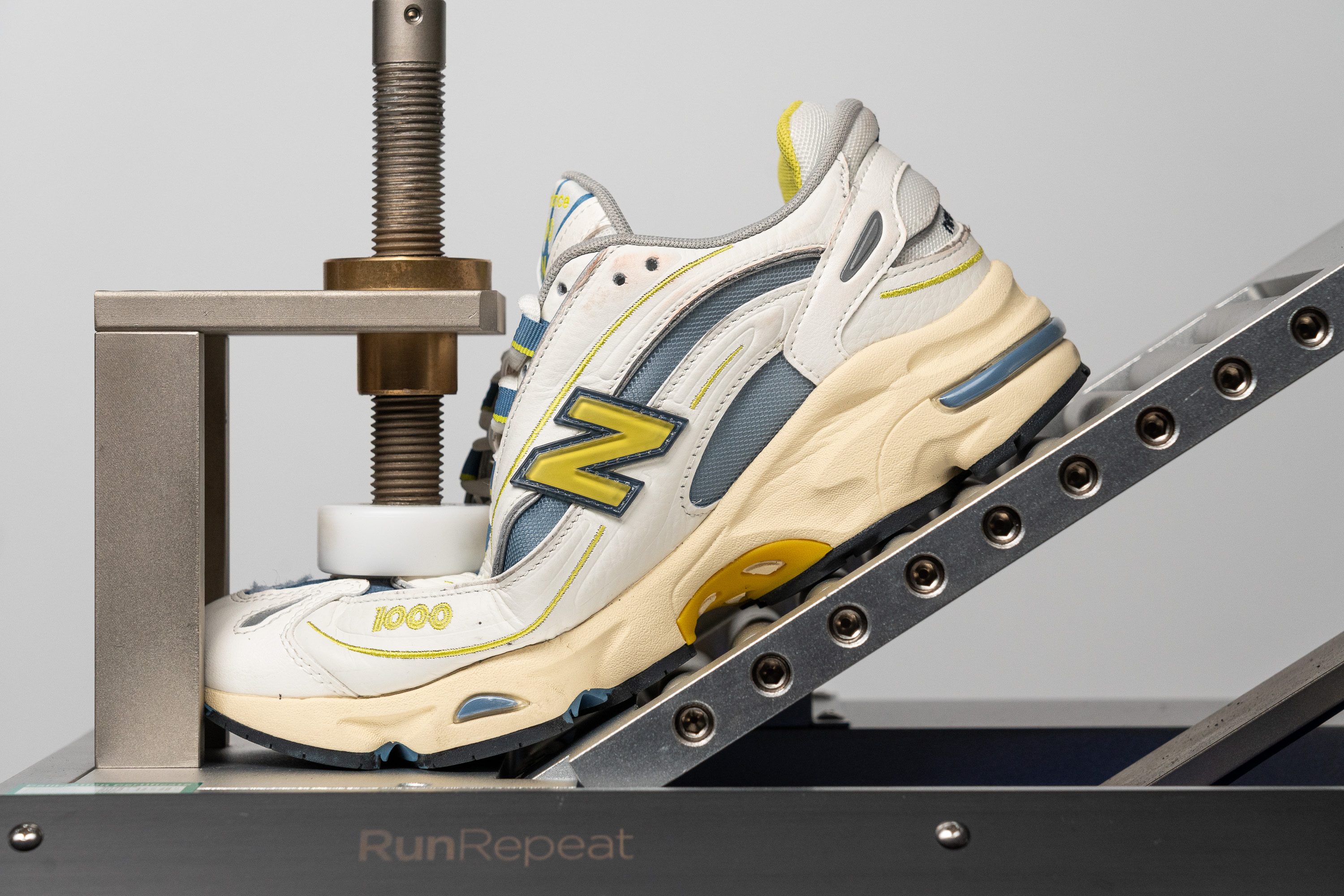
| 1000 | 11.7N |
| Average | 13.3N |
Weight
The buffed-up look of this shoe might have made you think it was going to be heavy, but nope!
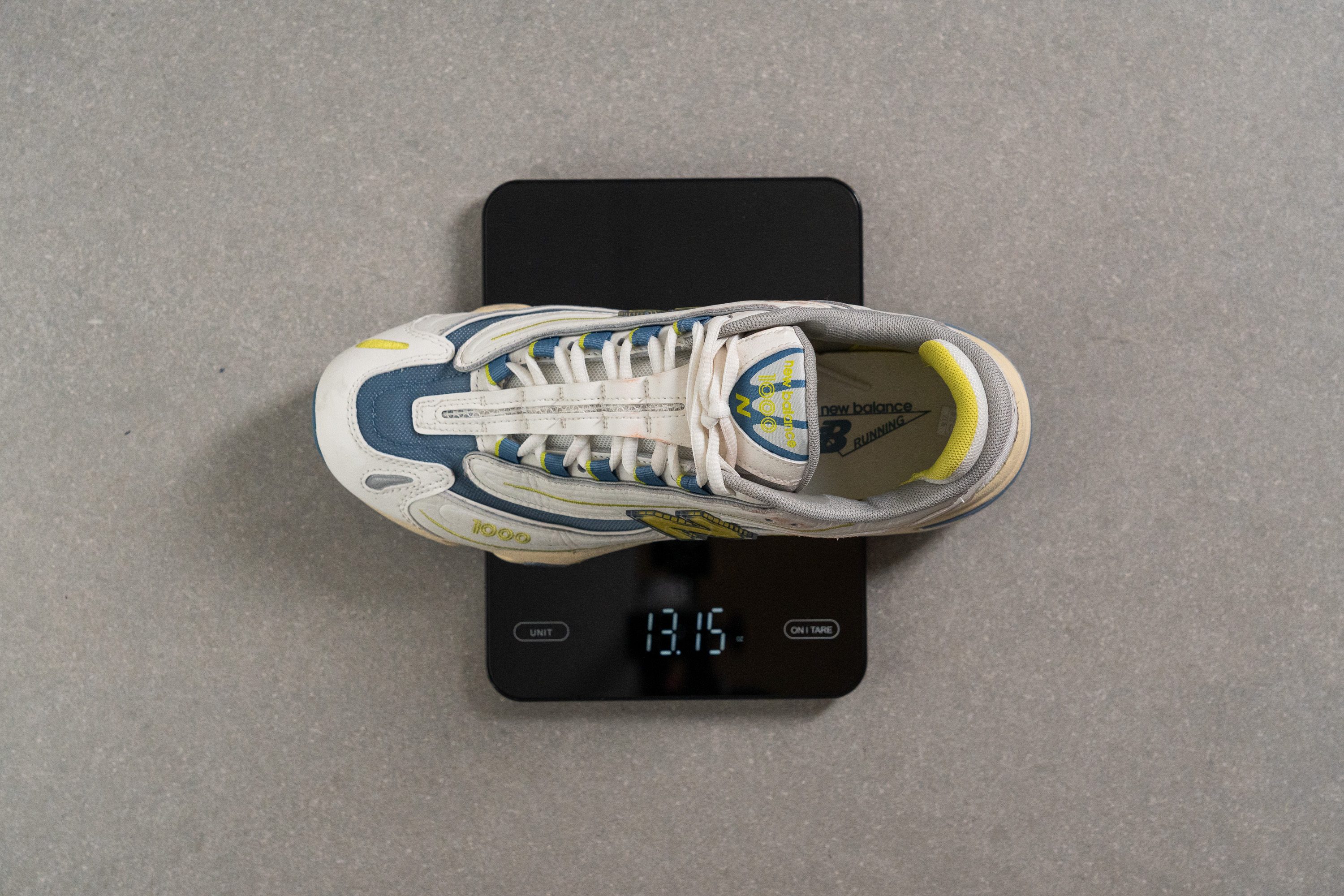
Our scale returned 13.2oz/373.0g when we took it to our lab, which is a solid 5% lighter than average. This might not sound like much to you, but it was really meaningful to our feet! We could walk for hours without them getting too tired, as the structured and soft design of this pair, added to its lightweight nature, felt incredible from sunrise to sunset.
| 1000 | 13.2 oz (373g) |
| Average | 13.8 oz (390g) |
Breathability
The 1000's upper is made using suede and mesh, and we trust the latter to let the air get in and out of the shoe easily!
Our light test looked promising, as the mesh areas let the LED shine with no issues. Let's see if our smoke machine confirms our hypothesis!
Absolutely! What a wonderful display of breathability! Just look at all the smoke flowing out of the shoe. How could we ever give this New Balance any other score than a 5/5? To make our decision even easier, the poor Reebok Phase Court became a leather oven.
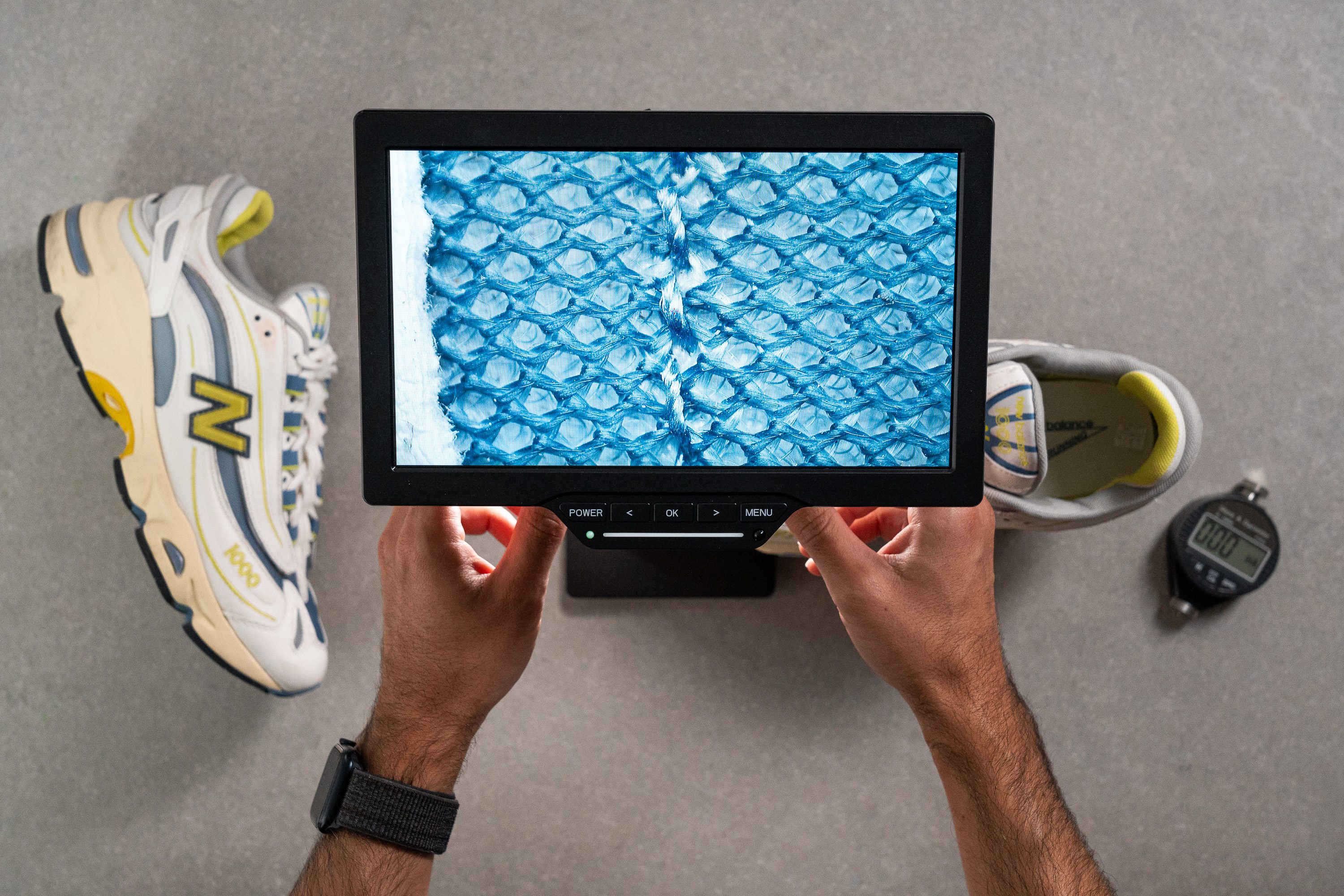
Thanks to our microscope, we could see the small gaps of the blue mesh that this pretty colorway features.
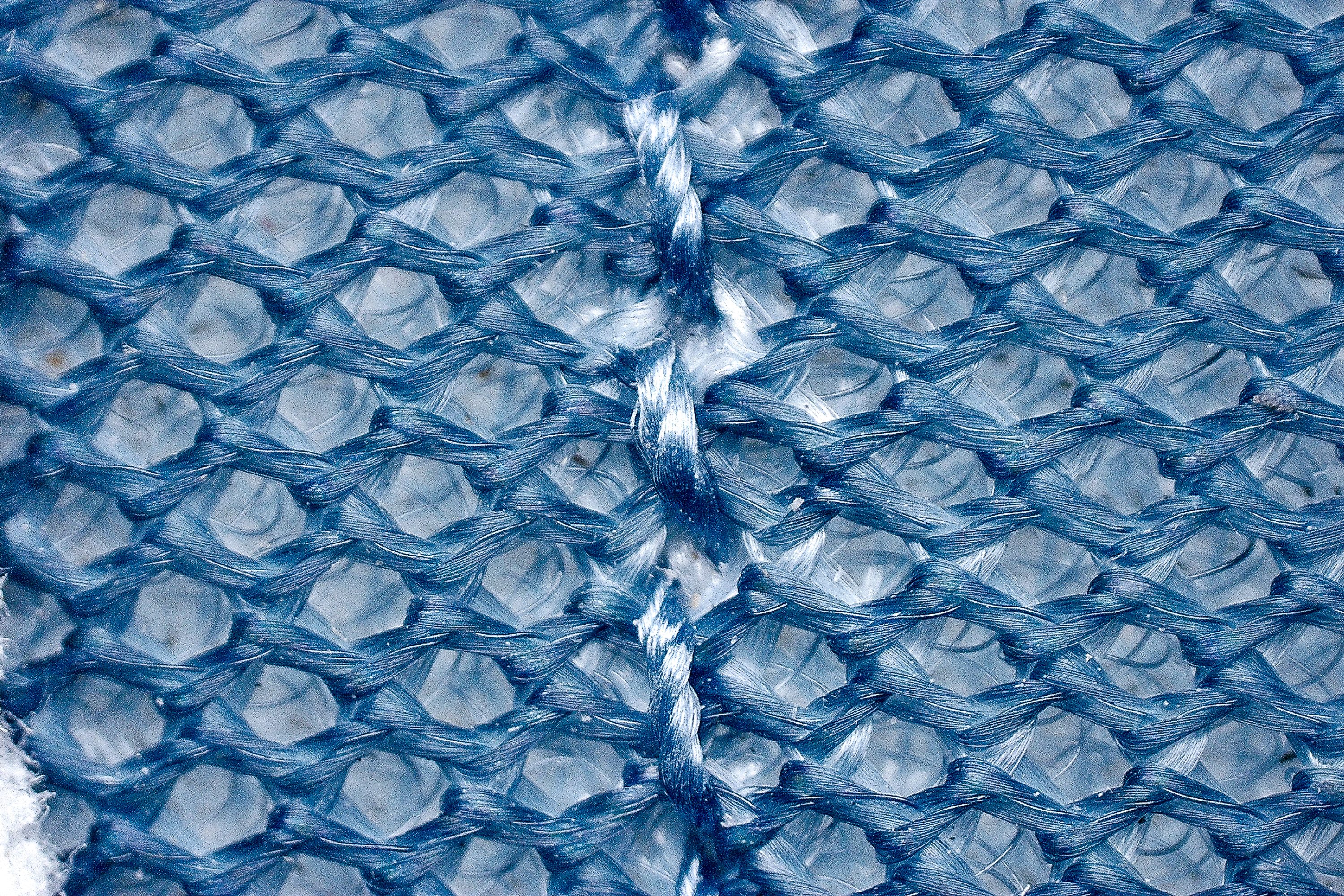
Even though we can see multiple layers, all of them let the air come in and out easily!
| 1000 | 5 |
| Average | 3 |
Stability
Lateral stability test
The NB 1000 felt pretty stable on foot!
As you can see in the video, our ankles didn't wobble much. The quality materials of this shoe made sure we felt supported laterally even if we had been walking all day long.
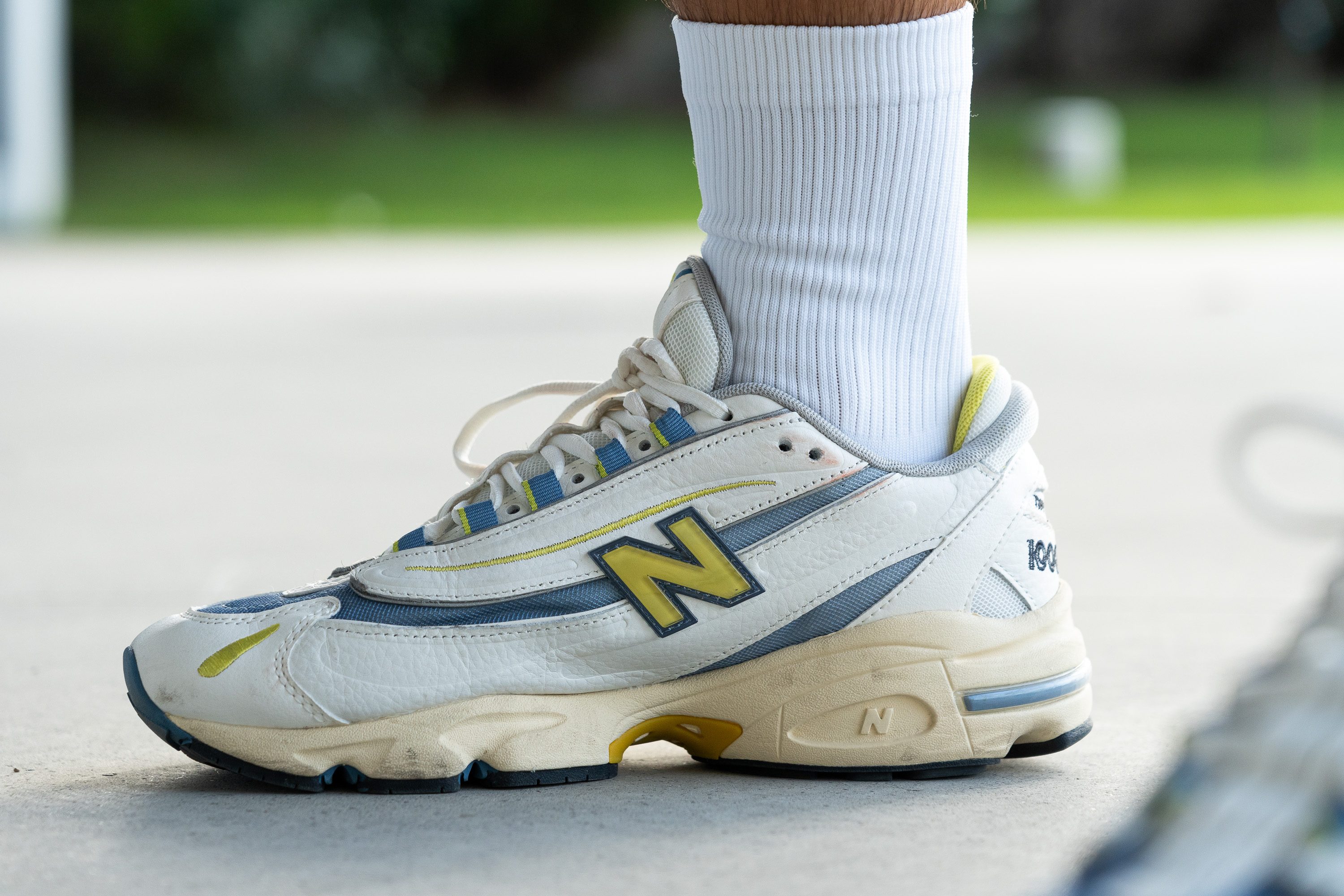
Torsional rigidity
Once we took this shoe to our lab, we could explain the safety we felt during our wear tests as soon as we performed our torsional rigidity test.
As you can see, our thumbs had to work hard to bend the 1000. Its chunky midsole didn't want to be twisted! After our experience on foot and on hand, we decided to give it a 4/5 on our torsional rigidity test.
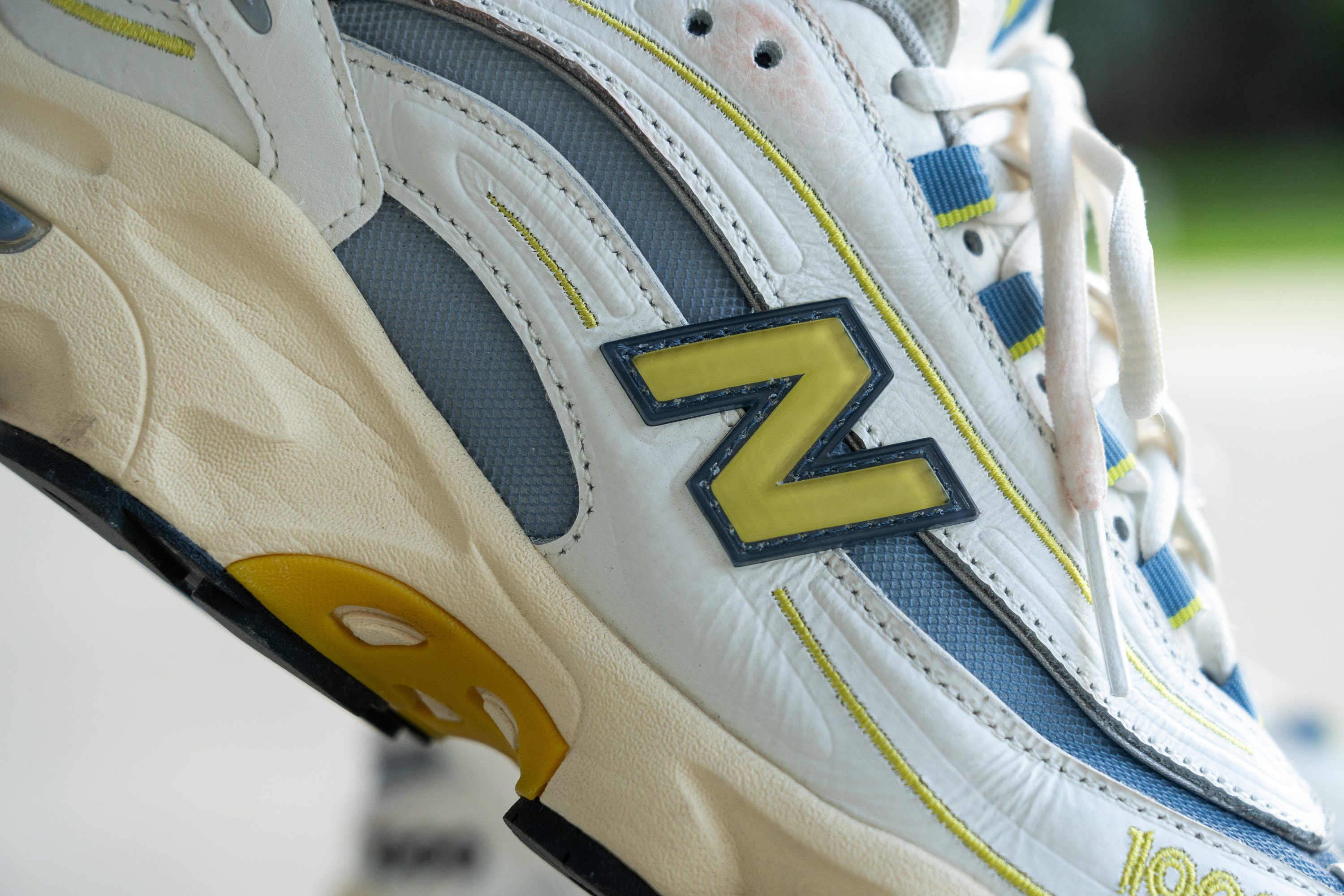
| 1000 | 4 |
| Average | 3.6 |
Heel counter stiffness
Its double heel counter followed the same path, as it earned another 4/5 on our stiffness test.
As you can see, our thumb had to push pretty hard to make it bow. We really liked this design, as it offered us support and out-of-the-box comfort: one of the best duos one can get in a shoe!
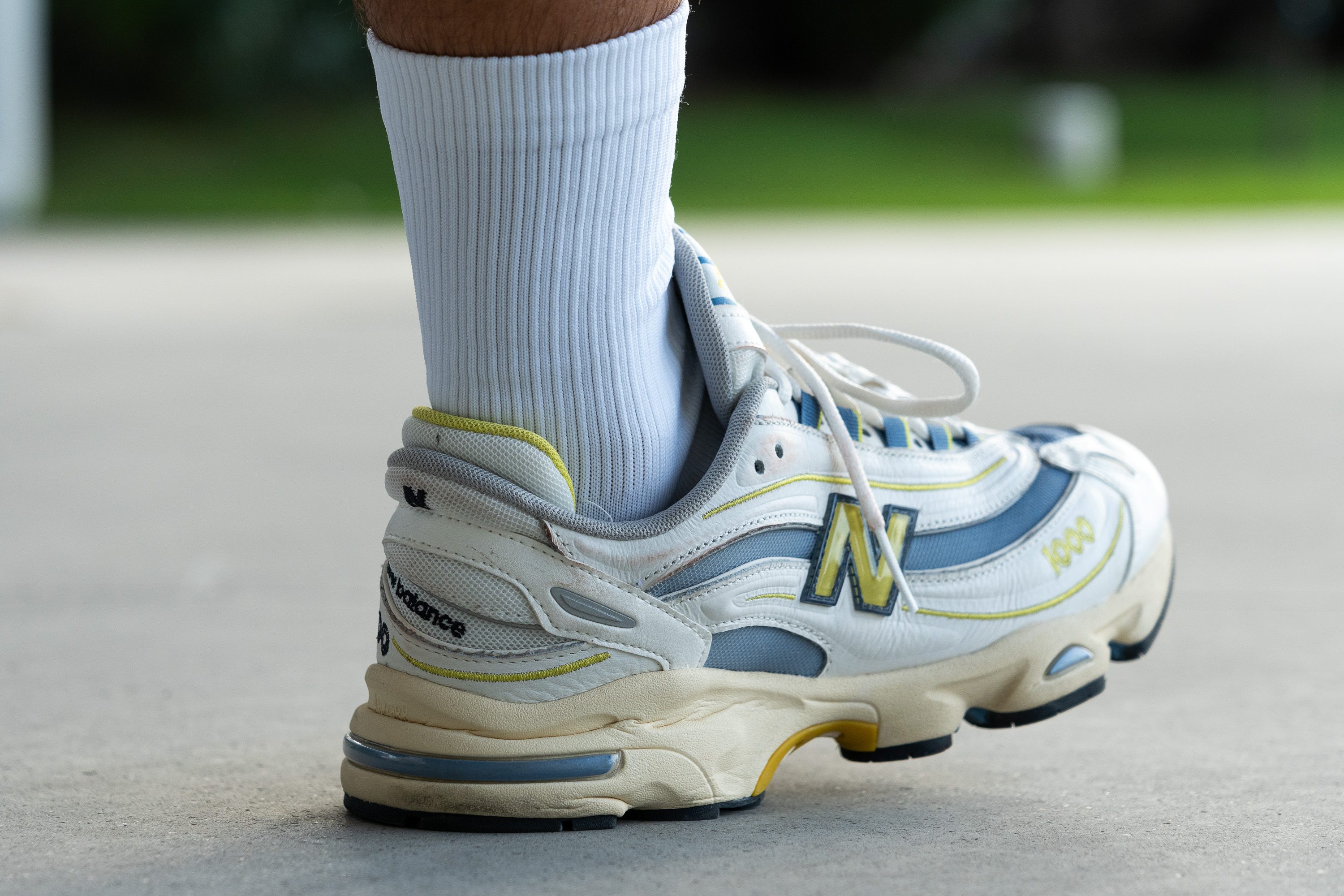
| 1000 | 4 |
| Average | 3.2 |
Midsole width - forefoot
More great news was on its way, as our calliper marked 111.9 mm when we measured this shoe's midsole width in the forefoot.
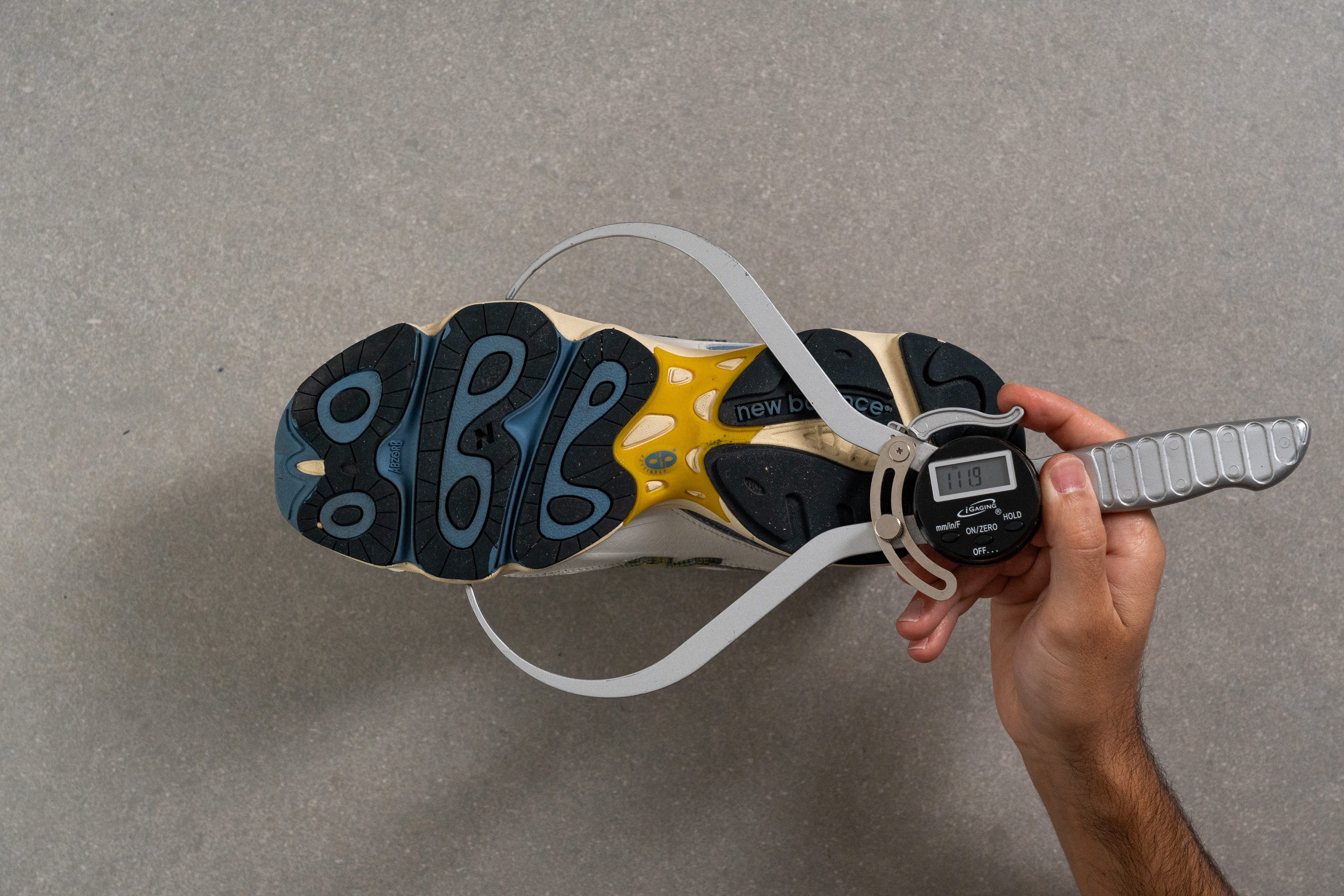
Apart from being wider than average, this figure also explains the wonderful stability we felt underfoot. You know, the wider the landing base, the more stable your feet will feel!

And this New Balance is the perfect example.
| 1000 | 111.9 mm |
| Average | 108.9 mm |
Midsole width - heel
We're really happy to say the heel follows up with another wider-than-average score!
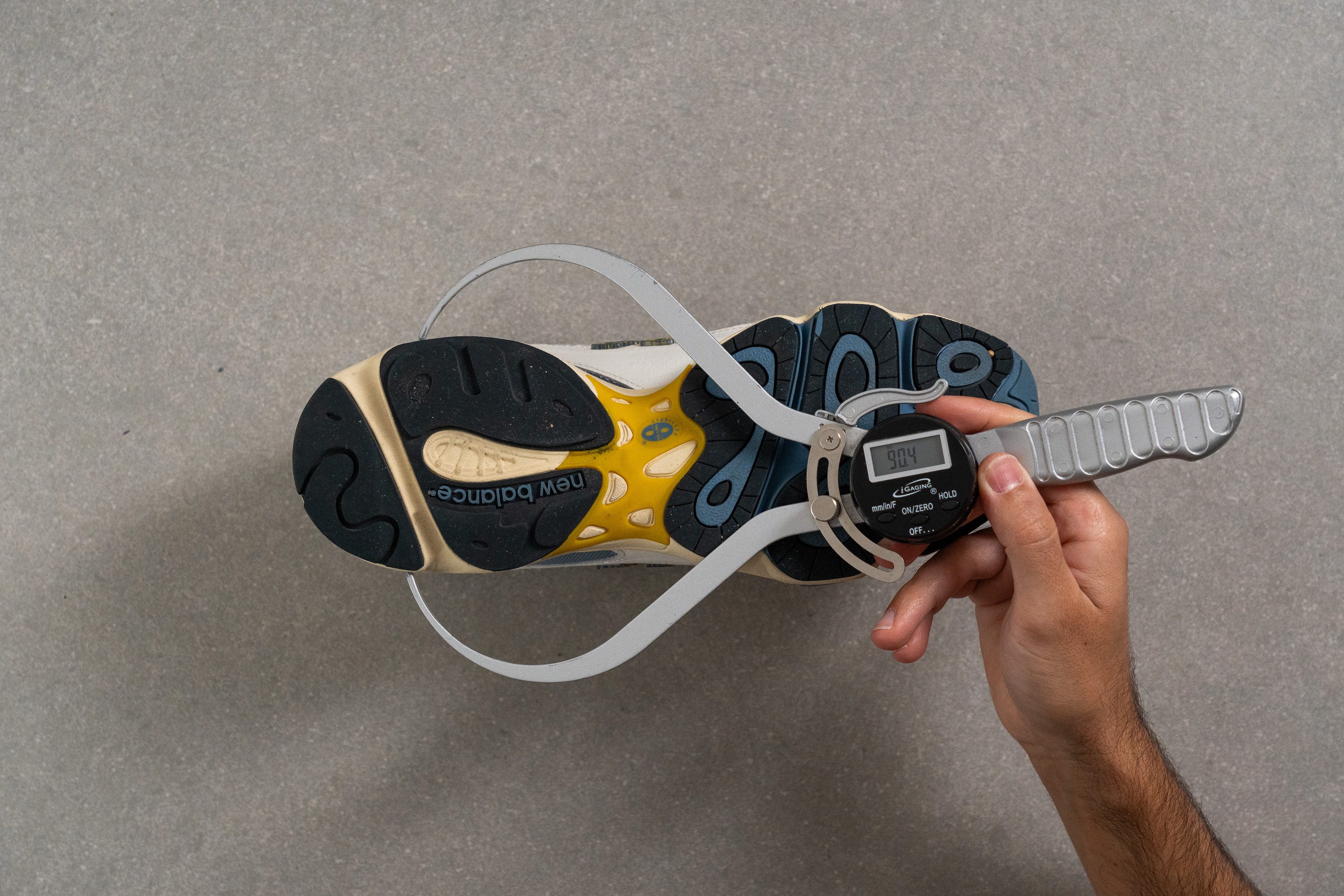
Our calliper returned 90.4 mm, which means our heels had plenty of space to reposition themselves after every step.
| 1000 | 90.4 mm |
| Average | 84.0 mm |
Durability
Leather/Suede quality
To verify if the material of a shoe is authentic, we burn it using our torch and scratch it mercilessly with our awl.
As you can see, we didn't have to face a massive flame, and the material didn't end up like a super chewed chewing gum! In other words: it's authentic!
So, good looks and good quality, right New Balance?
| 1000 | Real leather |
Toebox durability
We always place our Dremel on the very same spot, which helps us comparing the scores of different pairs.
Unfortunately, it was the mesh area the one that had to deal with the tool. And, consequently... the results were painful to see! We couldn't give this big mess anything higher than a 1/5, which is literally the worst score possible.
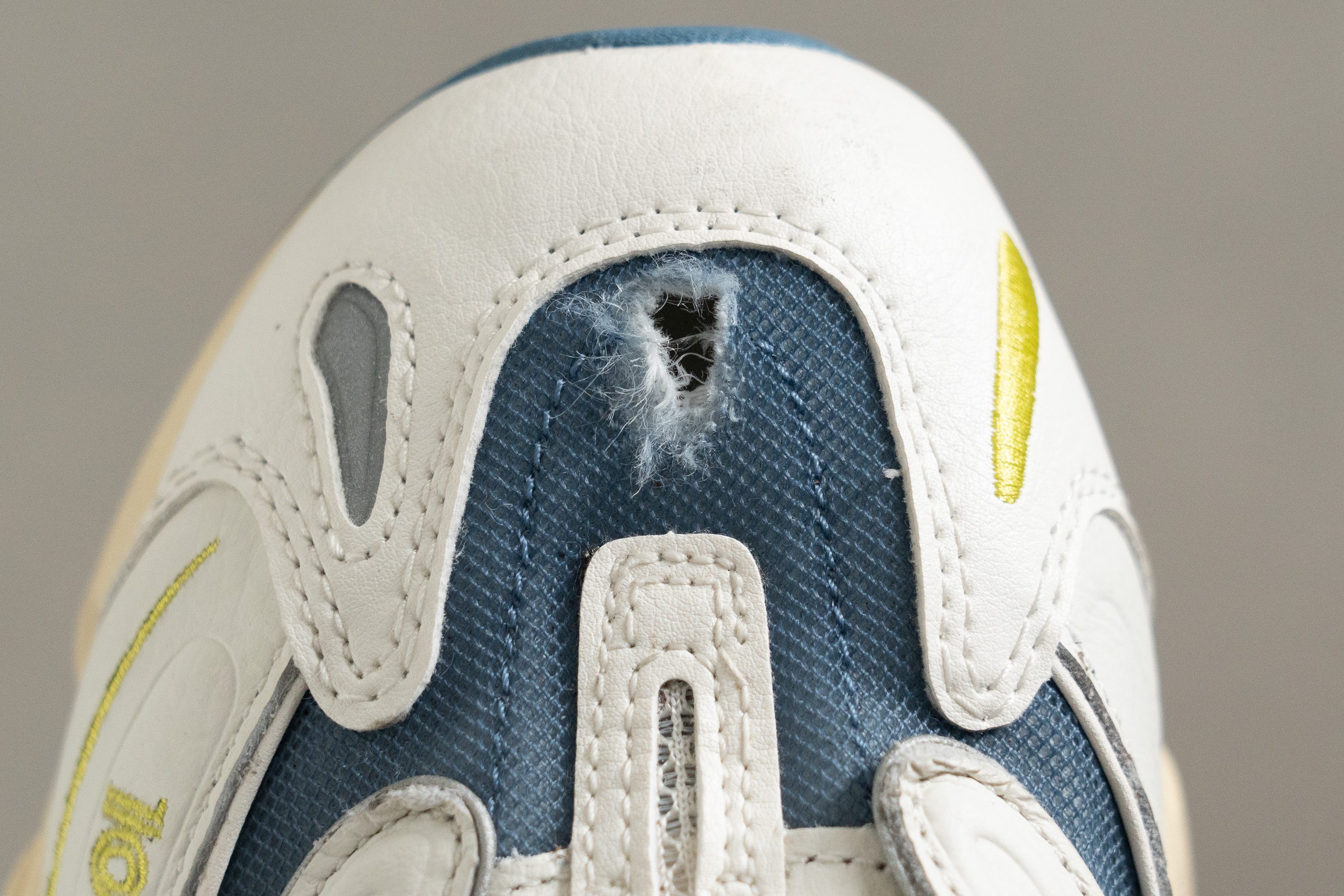
Hole-y cow! (Get it? Because it ended up with a hole!).
| 1000 | 1 |
| Average | 3.7 |
Heel padding durability
Sadly, things didn't get much better in the heel... They didn't get worse either, but just because that's not possible!
Another disaster! Trust us when we tell you we just wanted to close our eyes and forget these 2 durability tests even existed. With a landslide victory, our Dremel showed no mercy once again.
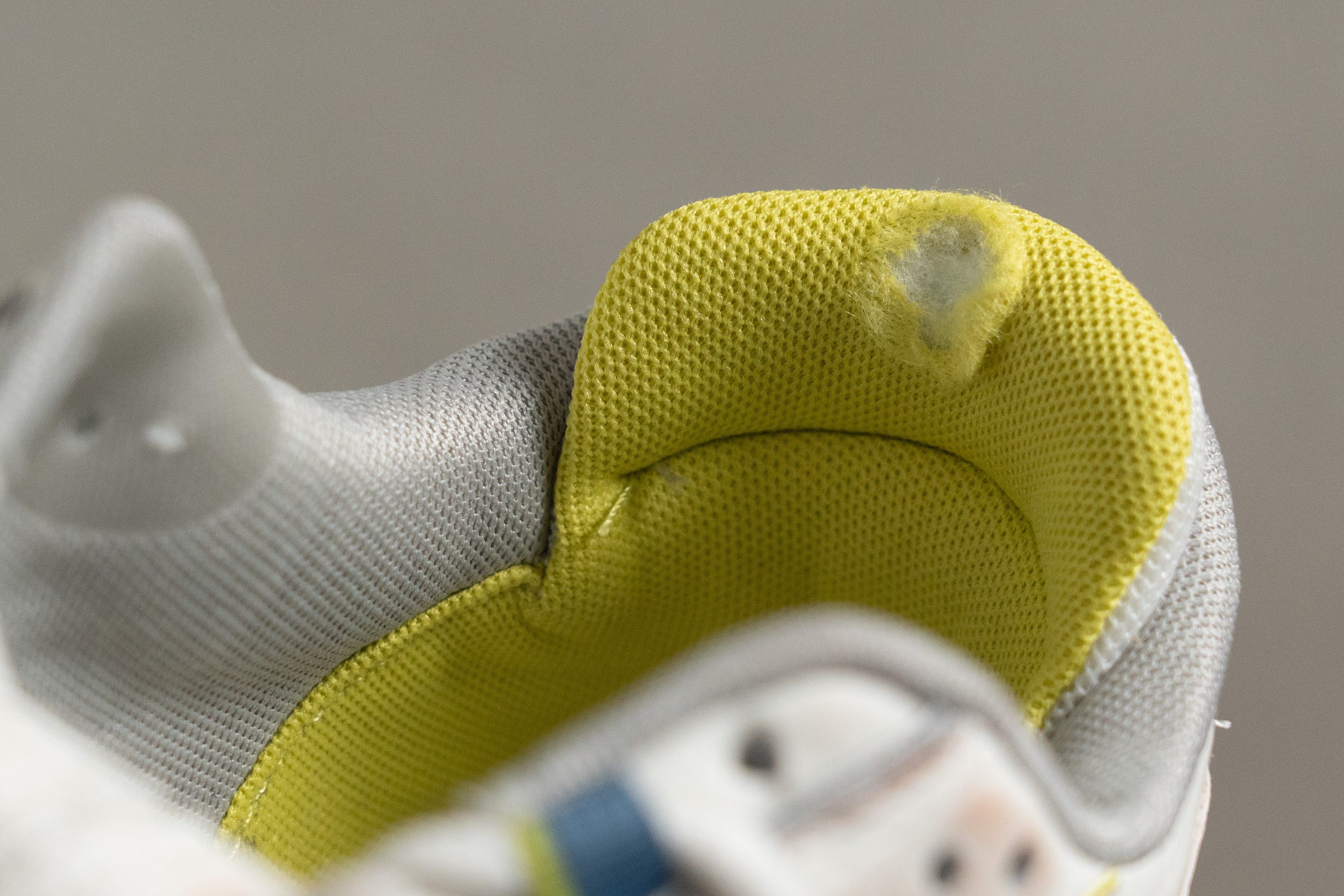
That's what a 1/5 on our heel padding durability test looks like. Oof!
| 1000 | 1 |
| Average | 3.2 |
Outsole hardness
To measure a shoe's outsole hardness, we need to press our durometer against it.
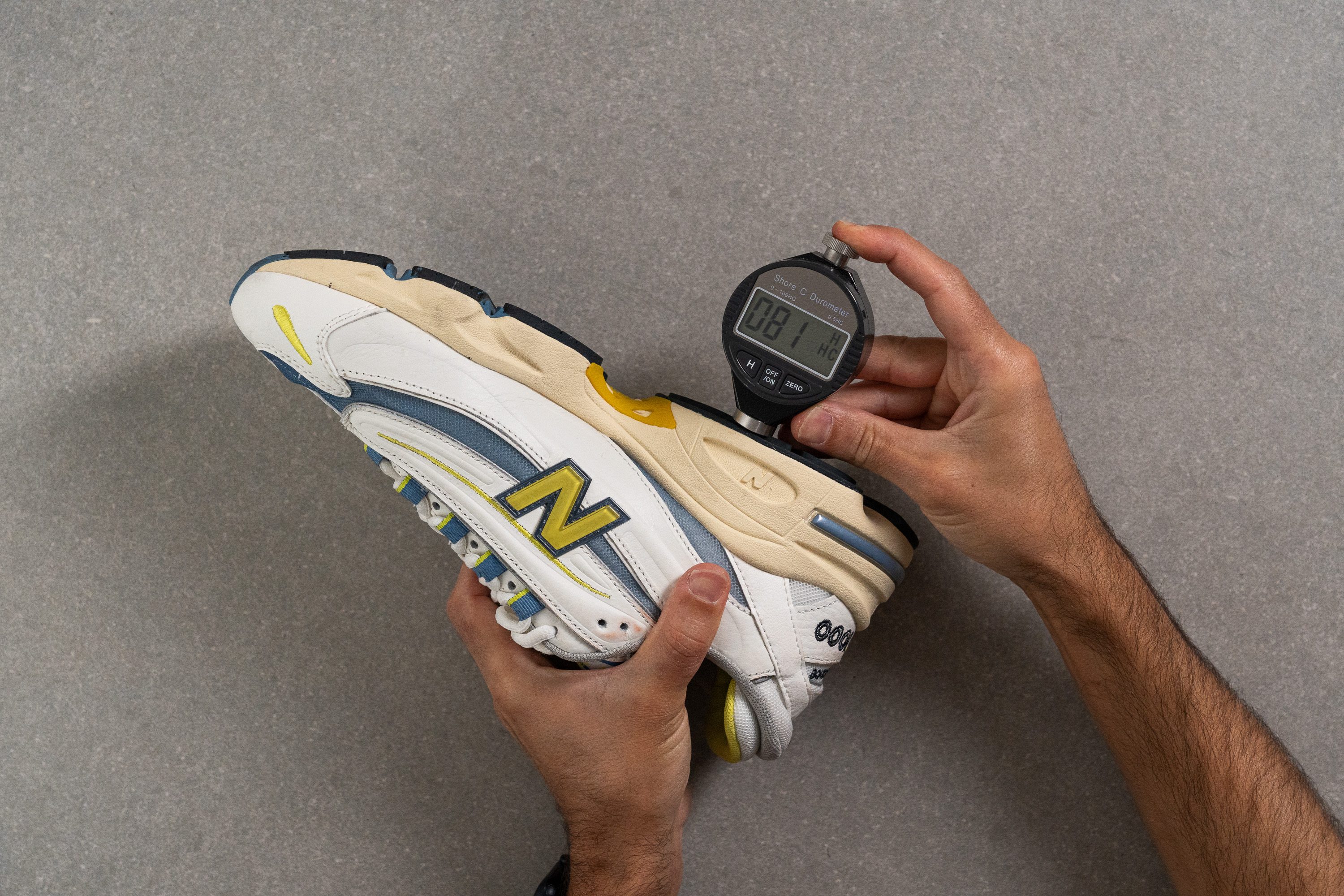
It returned 81.3 HC, which is slightly lower than average. This means the rubber is on the softer side, but not so much for us to be worried about its durability!
| 1000 | 81.3 HC |
| Average | 85.7 HC |
Outsole durability
Our Dremel had one last chance to get a hat trick. With 3.2N of force but this time at 10K RPM, we drilled this New Balance's outsole non-stop for 22 seconds.
And the results were not so bad! Our tread gauge returned 0.9 mm when we measured the depth of the dent, which is slightly lower than average. We were really happy about this, as it meant we could wear this shoe for hours and hours without being too worried about its outsole fading away!
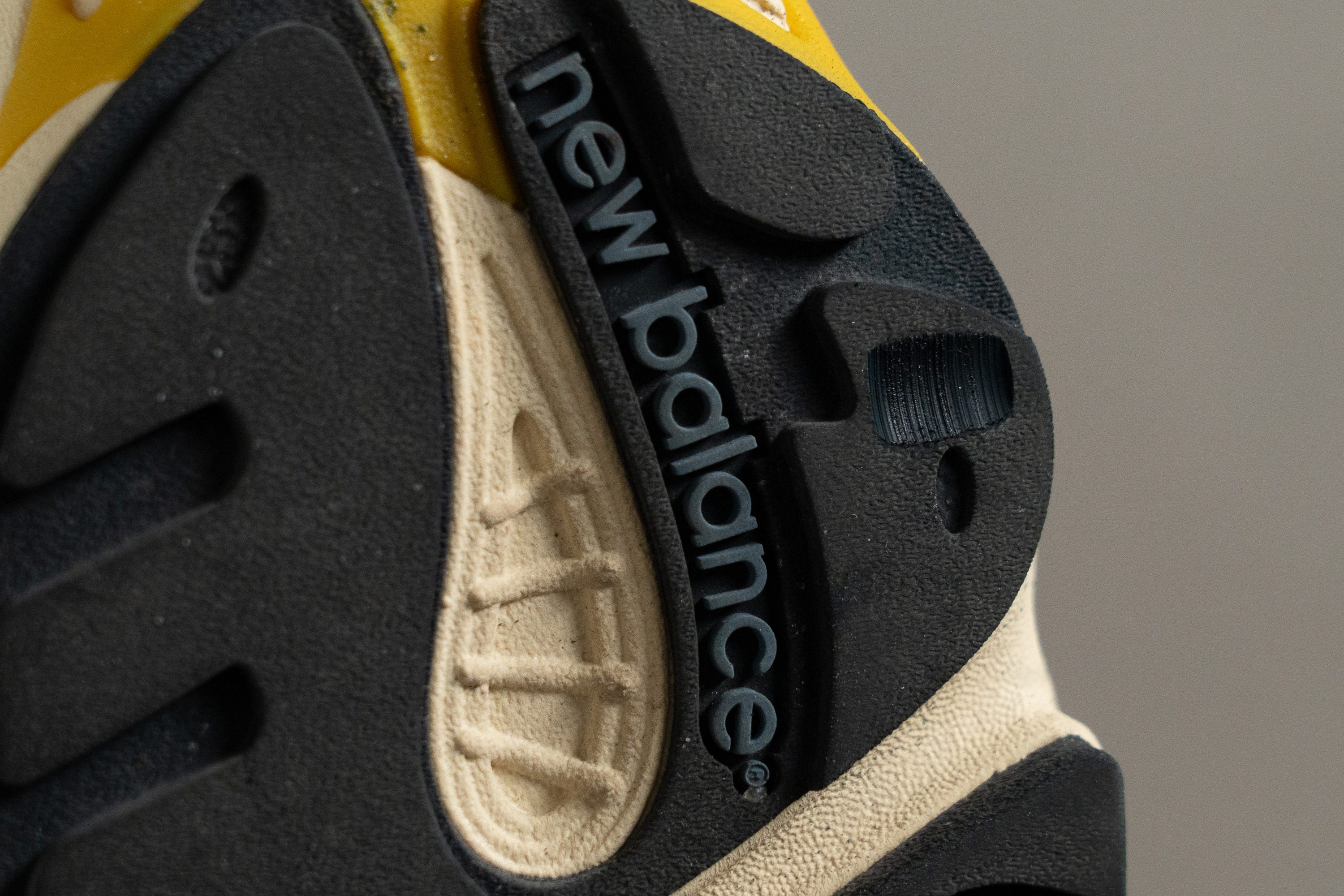
| 1000 | 0.9 mm |
| Average | 1.1 mm |
Outsole thickness
Apart from being durable, this pair's outsole is also almost as thick as the average.
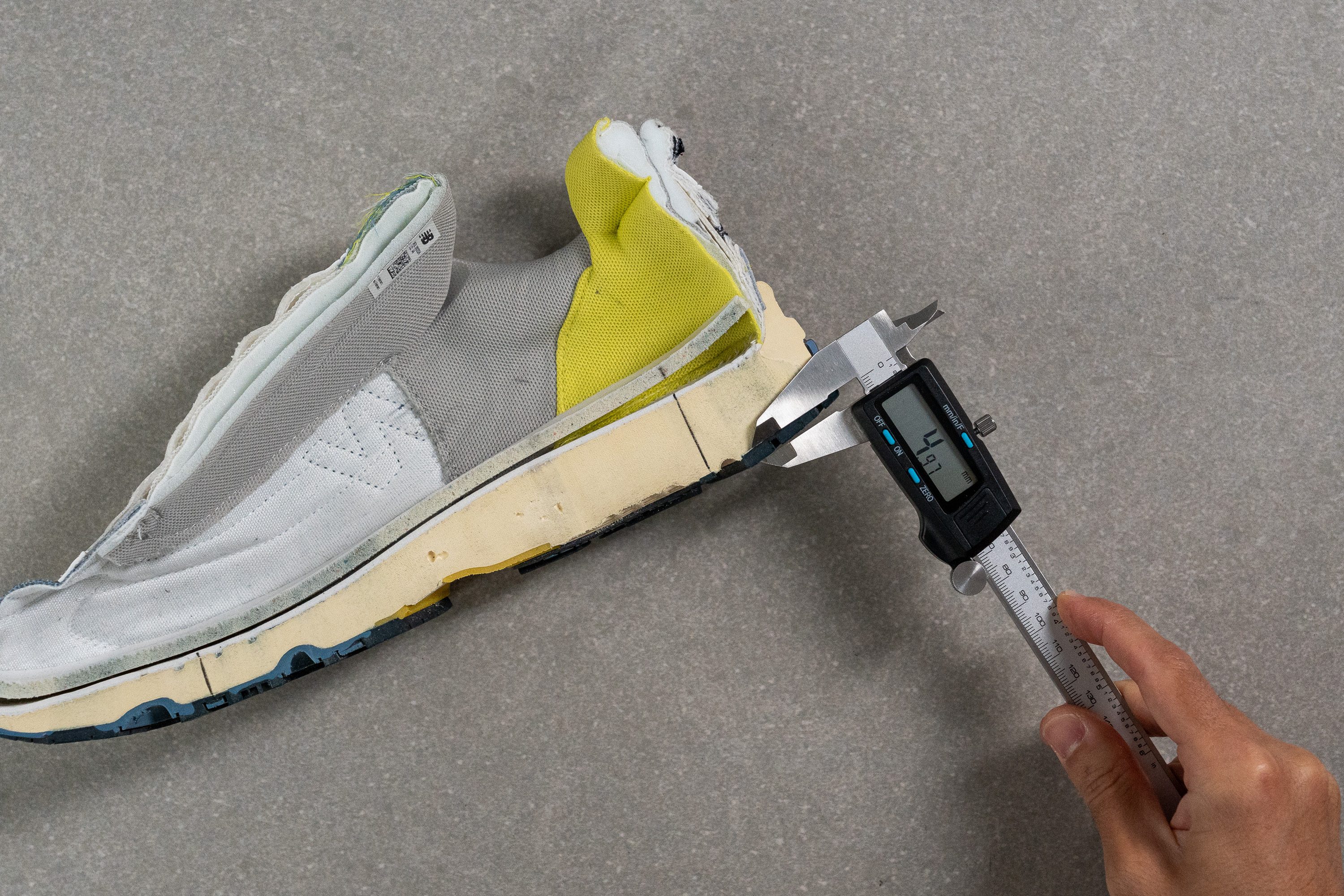
At 5.0 mm, we believe New Balance was spot-on with this piece. It adds up some extra points to the overall lifespan of the shoe, and it doesn't put on any unnecessary weight.
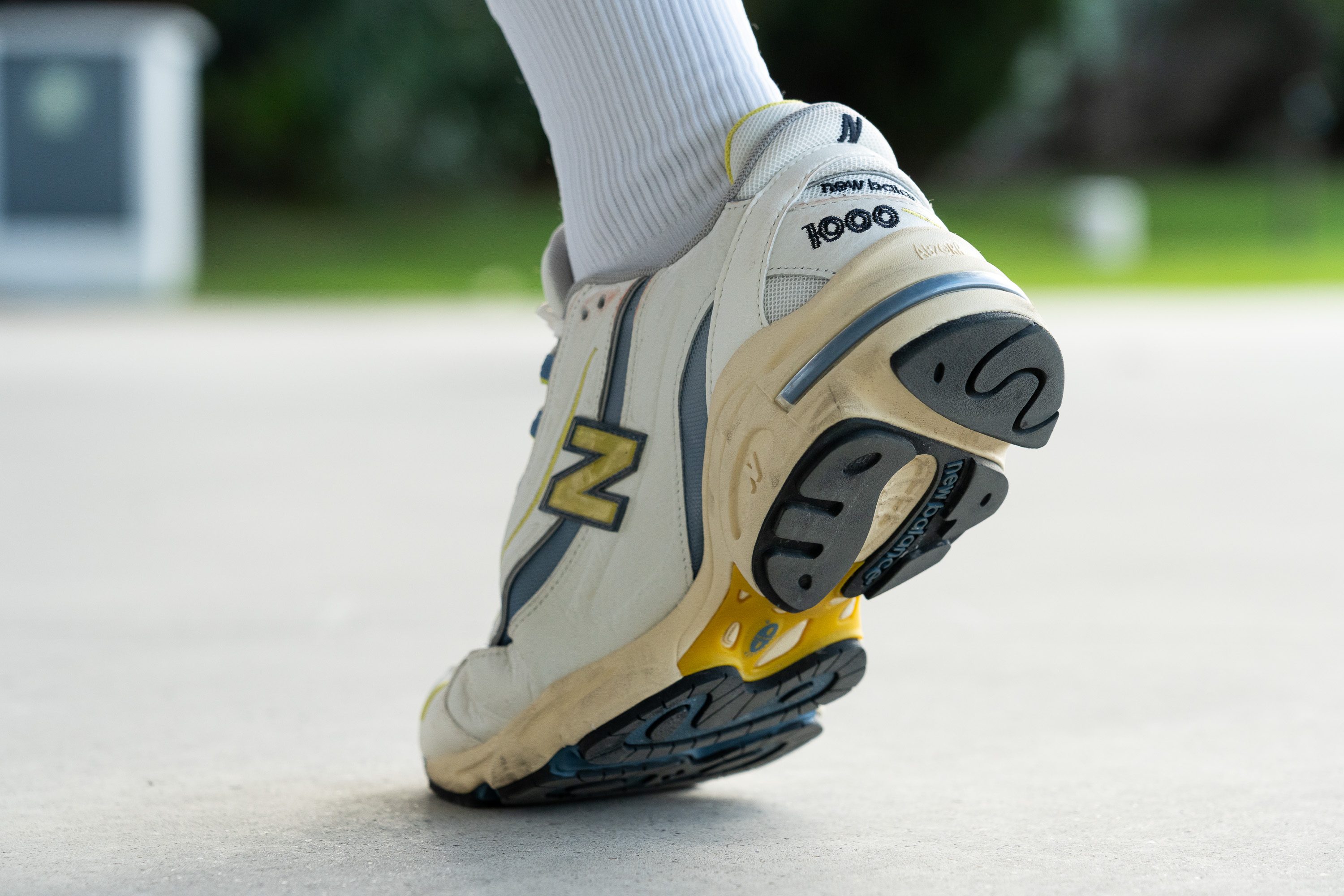
| 1000 | 5.0 mm |
| Average | 5.3 mm |
Misc
Insole thickness
New Balance has always been the queen of insoles.

In this case, it decided to keep things simple and go for a 4.6 mm thick piece. It added some extra points to the overall comfort levels of this shoe, so we can't complain!
| 1000 | 4.6 mm |
| Average | 5.1 mm |
Removable insole
As expected from this brand, the 1000 features a removable insole.
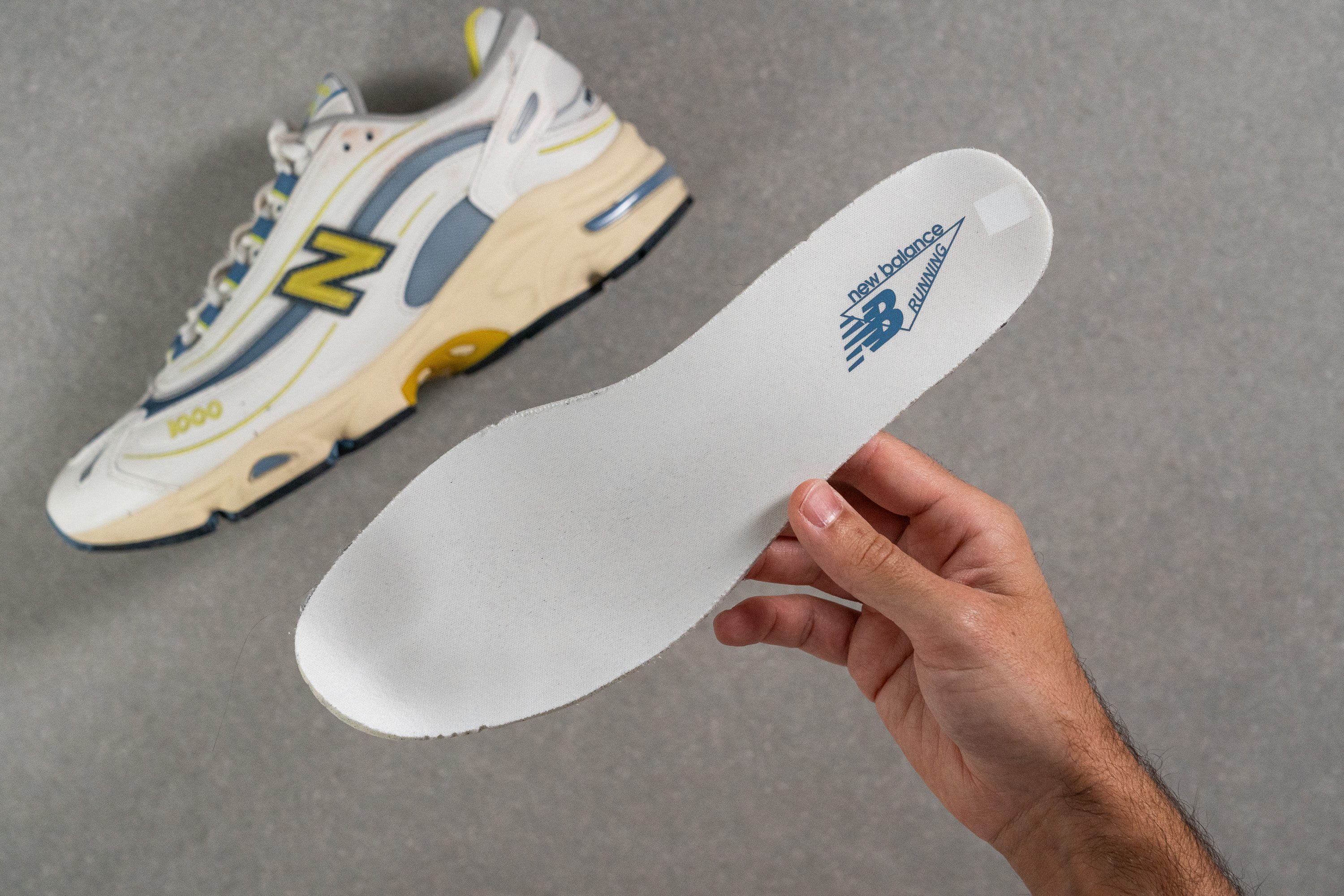
We really appreciate this, as it means we can change it if we want or need to.
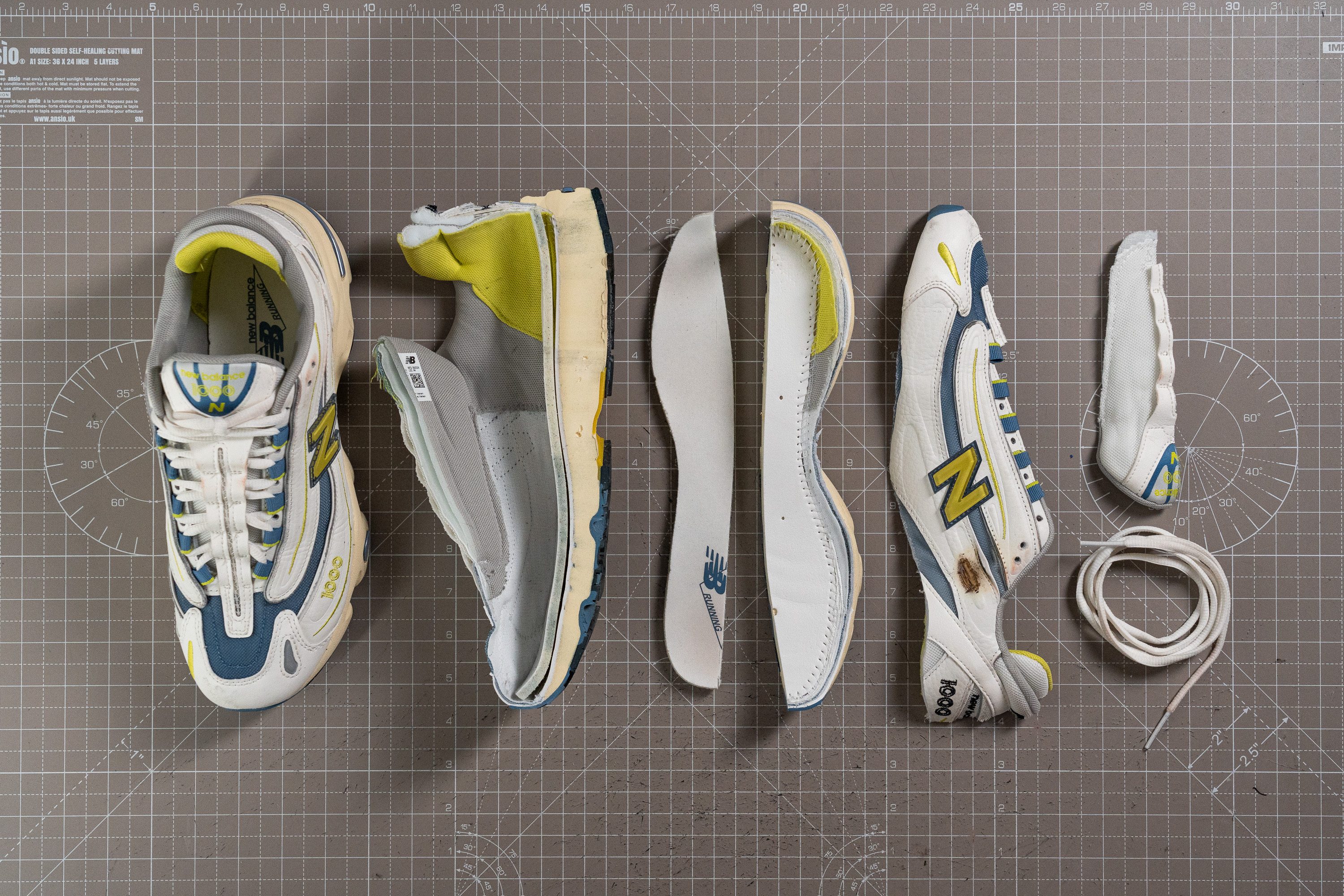
| 1000 | Yes |
Reflective elements
New Balance is a big fan of small reflective details, and we absolutely love it!
| 1000 | Yes |
Tongue padding
We didn't even know it was possible to make this shoe more comfortable, but its tongue had it clear.
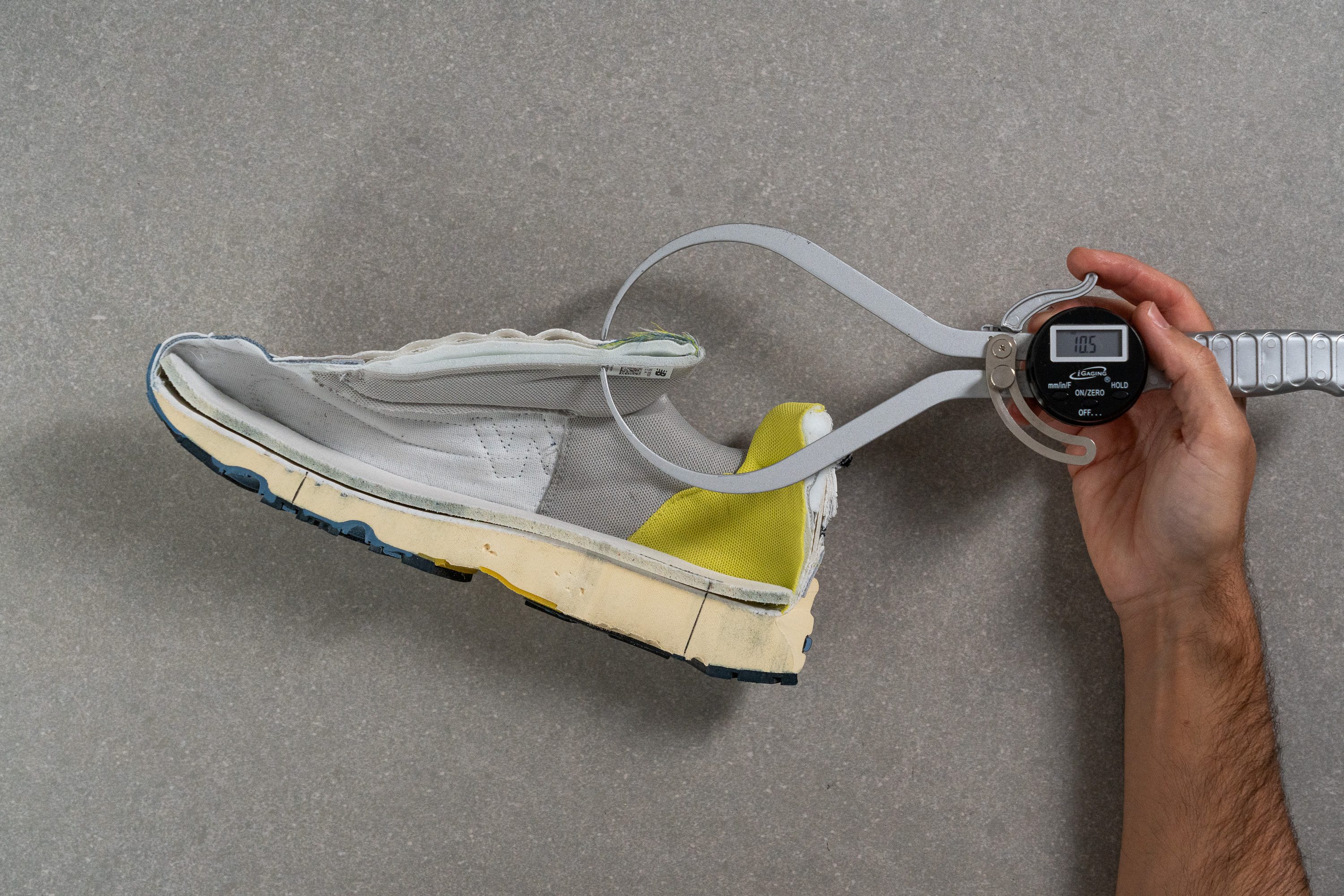
When we measured its padding, our calliper returned 10.5 mm, which means it's thicker than average. But this didn't really catch us by surprise, as this shoe's interiors are quite padded in general; especially the heel!
So we were pretty happy about this extra comfort without jeopardising the 1000's breathability levels. But, even though we're not talking about a heavy shoe, we believe the brand could've gone for a thinner tongue to save up some weight.
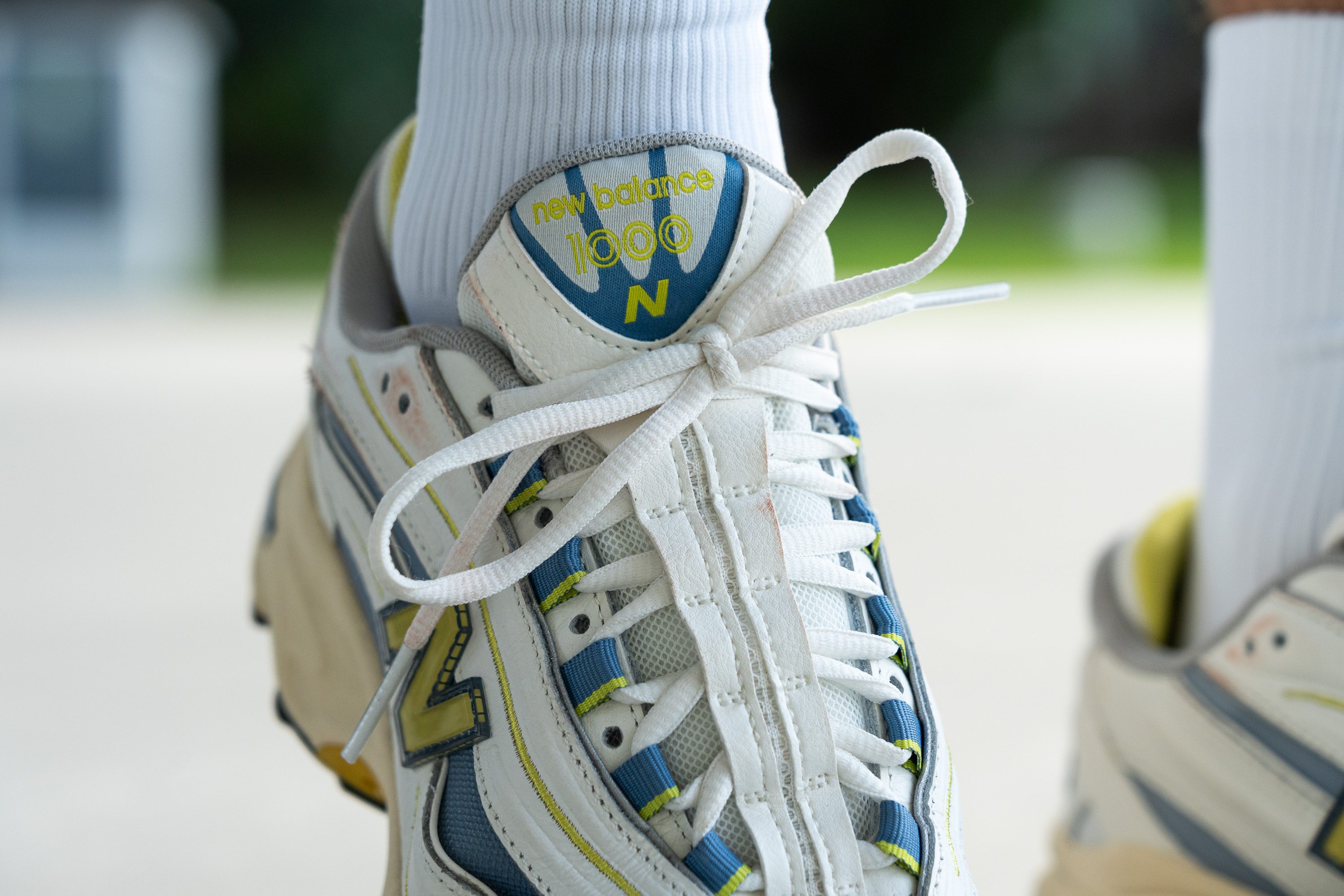
| 1000 | 10.5 mm |
| Average | 9.6 mm |
Price
After thoroughly analysing this shoe inside and outside our lab, we can say we do believe it's worth the price. The NB 1000 is neither on the cheaper nor on the more expensive side of New Balance pairs, as it comfortably sits in the middle as an all-day option with a very trendy and stylish vibe. It's made using high-quality materials, and our feet knew that as soon as we stepped in.
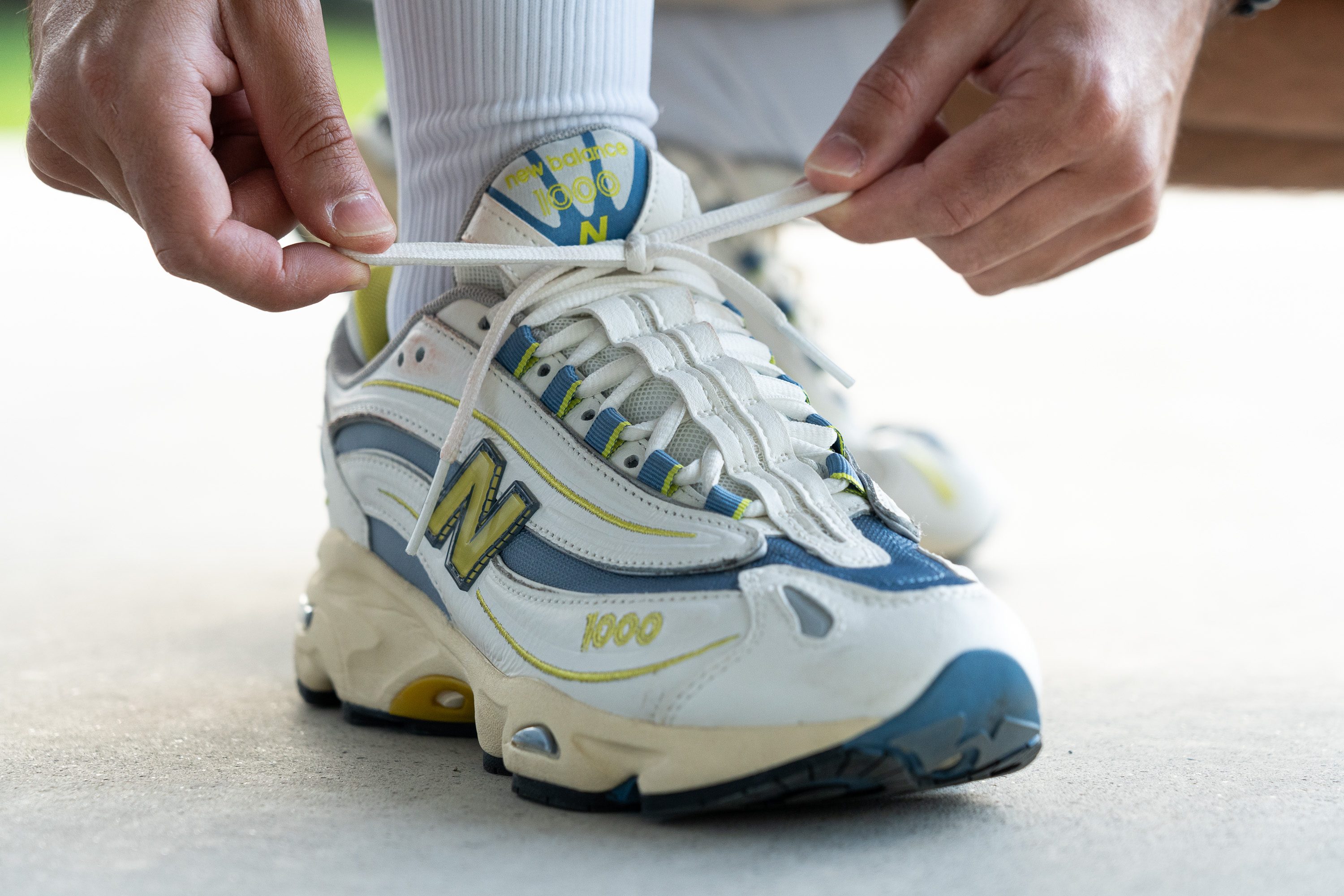
Nevertheless, if you're looking for something similar but more affordable, the New Balance 530 is a great alternative.
| 1000 | $150 |
Heel tab
The New Balance 1000 doesn't feature a heel tab, but thanks to its non-gusseted tongue we didn't feel like we needed one.

| 1000 | None |

